Results 1 to 5 of 5
Thread Information
Users Browsing this Thread
There are currently 1 users browsing this thread. (0 members and 1 guests)
-
10-21-2014, 11:36 AM #1
Afghan Poppy Cultivation at ‘All-Time High’
Afghan Poppy Cultivation at ‘All-Time High’
SIGAR: U.S. has spent $7.6B on counternarco ops
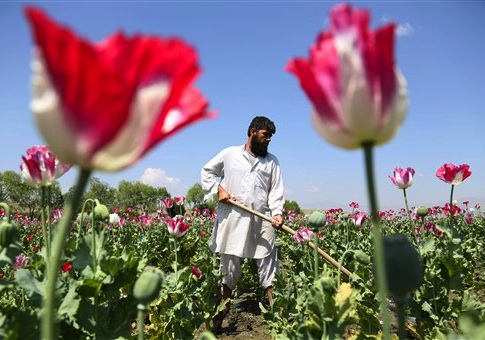 An Afghan farmer works on a poppy field in the Khogyani district of Jalalabad, east of Kabul, Afghanistan / AP
An Afghan farmer works on a poppy field in the Khogyani district of Jalalabad, east of Kabul, Afghanistan / AP
BY: Adam Kredo
October 21, 2014 10:00 am
Cultivation of the illegal poppy plant in Afghanistan has reached an “all time high” following a $7.6 billion counternarcotics campaign paid for by the United States, according to government oversight investigators.
Despite the spending to combat growth of the poppy plant, which is used to make drugs such as opium and heroin, cultivation has reached an “all time high,” especially in places once declared “poppy free,” according to new report by the Special Inspector General for Afghanistan Reconstruction (SIGAR).
“After a decade of reconstruction and over $7 billion in counternarcotics efforts, poppy cultivation levels are at an all-time high,” SIGAR concluded in its report released Wednesday.
The findings have caused concern about the effectiveness of the United States’ efforts to stymie poppy production, SIGAR concluded.
Levels of poppy farming have not been this high since 2007, according to SIGAR.
And “with deteriorating security in many parts of rural Afghanistan and low levels of eradication of poppy fields, further increases in cultivation are likely in 2014,” SIGAR informed the Defense and Justice Departments in a recent alert.
Afghanistan has experienced a 50 percent increase in poppy-related proceeds from 2012 to 2013 as a result of the farming boon, according to the report.
“Despite the significant financial expenditure, opium poppy cultivation has far exceeded previous records,” according to SIGAR.
The boost in production of the popular drug is primarily the result of new deep-well technology that has allowed the Afghans to turn large portions of the once inhabitable desert into fertile land.
“Due to relatively high opium prices and the rise of an inexpensive, skilled, and mobile labor force, much of this newly-arable land is dedicated to opium cultivation,” the report states. “Poppy-growing provinces that were once declared ‘poppy free’ have seen a resurgence in cultivation.”
Areas once “considered a model for successful counterinsurgency and counternarcotics efforts” have seen poppy production grow fourfold between 2012 and 2013, according to SIGAR.
Profits garnered from the production of opium and other poppy-derived drugs have increased from $2 billion in 2012 to $3 billion in 2013, the report found.
Questions are now being raised about the effectiveness of the United States’ counternarcotics strategy in Afghanistan.
“In past years, surges in opium poppy cultivation have been met by a coordinated response from the U.S. government and coalition partners, which has led to a temporary decline in levels of opium production,” according to SIGAR. “However, the recent record-high level of poppy cultivation calls into question the long-term effectiveness and sustainability of those prior efforts.”
The U.S. Embassy in Kabul admitted defeat in the drug arena when approached by the watchdog for comment on its report.
The U.S. Embassy in Kabul, speaking on behalf of the State Department and USAID, “acknowledged the significance of the poppy cultivation issue in Afghanistan,” according to SIGAR.
It “also acknowledged that, after more than a decade of taxpayer-funded counternarcotics programs in Afghanistan, U.S. government efforts to build Afghan government counternarcotics capability were still ‘in progress,’” according to their comments recounted in SIGAR’s report.
However, the embassy also maintained that some of its counternarcotics efforts “are yielding results.”
“There is no silver bullet to eliminate drug cultivation or production in Afghanistan or to address the epidemic of substance abuse disorder that plagues too many Afghans,” the embassy wrote in a statement to SIGAR.
As the drug problem grows worse, SIGAR is recommending that the DoD and other agencies reassess their game plan.
“I strongly suggest that your departments consider the trends in opium cultivation and the effectiveness of past counternarcotics efforts when planning future initiatives,” SIGAR wrote.
http://freebeacon.com/national-security/afghan-poppy-cultivation-at-all-time-high/
-
10-21-2014, 11:47 AM #2
It looks like this was another lie also. In October 2009 we find that US troops are being used to GUARD the poppy fields. Another instance of protecting the economic interests of another country over the need to destroy the scourge of our plant and fund the Islamists.
Afghanistan's poppies pose dilemma
Updated 3/31/2009
By Ken Dilanian, USA TODAY
WASHINGTON — President Obama's new strategy for Afghanistan calls for continuing the destruction of poppy fields, although experts and his top envoy to the region have called the practice counterproductive.
Richard Holbrooke, the administration's coordinator of Afghanistan policy, said this month that eradicating the opium poppy fields is "wasteful and ineffective" and has been "pushing farmers into the Taliban's hands" because it destroys farmers' livelihoods and leaves them with few alternatives.
AID: U.S. pledging $40M for Afghan elections
ARMY GEAR: Equipment gets tailored for Afghan mission
"Eradication has been a disaster," said another expert, Vanda Felbab-Brown of Georgetown University. "It has really antagonized the population."
Barnett Rubin, a New York University professor and Holbrooke adviser, told Congress last year that eradication usually fuels the Taliban-led insurgency.
However, the white paper on Afghanistan released Friday by the White House says the new strategy will spend more on "crop substitution and alternative livelihood programs" while continuing the practice of "targeting those who grow the poppy."
Holbrooke said after the release of the Afghanistan strategy that "you can't eliminate the whole eradication program. But you've got to put more emphasis on agricultural job creation."
The dilemma of Afghanistan's poppy production has long bedeviled civilian and military strategists. The crop makes up 90% of the world's opium, which is used to make heroin, and a third of the nation's gross domestic product, according to the United Nations. Opium profits fuel the insurgency, but so does destroying the poppy crops of poor farmers, says Lt. Col. John Glaze, whose 2007 report for the Army War College argued against eradication.
Poppy production has skyrocketed since the 2001 U.S. invasion. President Bush proposed chemical spraying to kill poppy fields, but the Afghan government and European countries resisted that step as too harsh. In the past two years, the Bush administration pursued a strategy that combined limited poppy-plant eradication by hand and relatively modest programs to help farmers grow alternative crops.
The military also began targeting opium traffickers, as opposed to growers. Former Afghanistan counternarcotics coordinator Thomas Schweich says that formula succeeded in driving down opium production by 6% last year, and the number of acres under cultivation dropped 19%. Other experts, including Felbab-Brown, attribute that decline to market saturation and drought.
Holbrooke criticized the Bush strategy in a column in TheWashington Post last year. "Even without aerial eradication," he wrote, "the program, which costs around $1 billion a year, may be the single most ineffective program in the history of American foreign policy. It's not just a waste of money. It actually strengthens the Taliban and al-Qaeda."
Holbrooke repeated that view March 22 at a public forum in Brussels.
"We have gotten nothing out of it — nothing," he said. "It is true that some … opium crop has been destroyed, but it hasn't hurt the Taliban one iota. We're often pushing farmers into the Taliban hands."
Felbab-Brown said providing wheat seeds to farmers in exchange for not growing opium won't work.
"Afghan farmers can buy wheat seeds, that's not the problem," she said. "The problem is that they can't make sufficient living on it or get access to credit and land. Wheat is also much less labor-intensive so it won't be able to absorb the same amount of farmers as opium poppy can."
Obama said Friday that officials will monitor the growth of illegal opium production in Afghanistan as one measure of progress in the nation.
In an e-mail to USA TODAY, Holbrooke said the opium strategy was not fully formulated.
"In the time available we could not design an all new program but there was unanimity that there was significant flaws in the current program," he said. "Now that the Strategic Review is done, we will turn our attention towards agriculture sector job creation and alternative livelihoods while at the same time the government has to go after the drug lords."
http://usatoday30.usatoday.com/news/...y-fields_N.htm
-
10-21-2014, 11:49 AM #3
U.S. Troops Patrolling Poppy Fields In Afghanistan (Photos)
Posted on October 18, 2012 by WashingtonsBlog
Are American Troops Protecting Afghan Opium?
Preface: As many have noted, the U.S. government has – at least at some times in some parts of the world – protected drug operations. (Big American banks also launder money for drug cartels. See this,this, this and this. Indeed, drug dealers kept the banking system afloat during the depths of the 2008 financial crisis. But that’s beyond the scope of this post.)
The U.S. military has openly said that it is protecting Afghani poppy fields:
As Wikiepedia notes:Opium production in Afghanistan has been on the rise since U.S. occupation started in 2001.Public Intelligence has published a series of photographs showing American – and U.S.-trained Afghan – troops patrolling poppy fields in Afghanistan. Public Intelligence informs us that all of the photos are in the public domain, and not subject to copyright, and they assured me that I have every right to reproduce them.
We produce these photos and the accompanying descriptions from Public Intelligence without further comment.
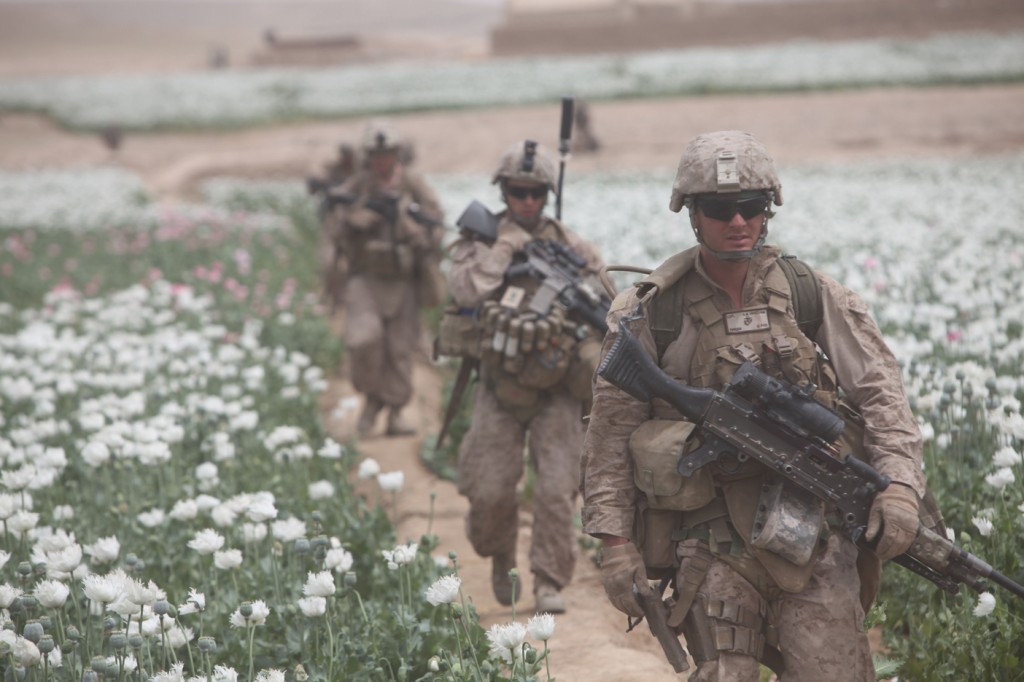 U.S. Marines with Fox Company, 2nd Battalion, 5th Marine Regiment, Regimental Combat Team 6, patrol through a poppy field during Operation Lariat in the Lui Tal district, Helmand province, Afghanistan, April 16, 2012. The Marines conducted the operation to disrupt enemy logistics and establish a presence in the area. (U.S. Marine Corps photo by Lance Cpl. Ismael E. Ortega/Released)
U.S. Marines with Fox Company, 2nd Battalion, 5th Marine Regiment, Regimental Combat Team 6, patrol through a poppy field during Operation Lariat in the Lui Tal district, Helmand province, Afghanistan, April 16, 2012. The Marines conducted the operation to disrupt enemy logistics and establish a presence in the area. (U.S. Marine Corps photo by Lance Cpl. Ismael E. Ortega/Released)
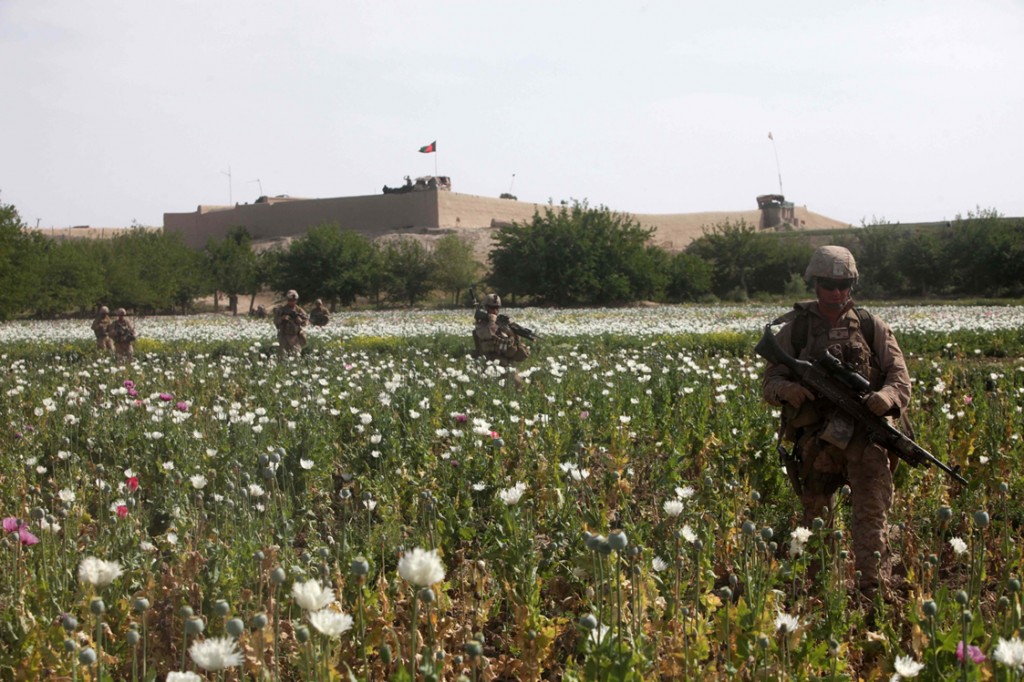 U.S. Marines with Fox Company, 2nd Battalion, 5th Marine Regiment, Regimental Combat Team 6, patrol through a poppy field on their way to Patrol Base (PB) Mohmon in the Lui Tal district, Helmand province, Afghanistan, April 17, 2012. The Marines joined with coalition forces at the PB to begin conducting operations in the area. (U.S. Marine Corps photo by Lance Cpl. Ismael E. Ortega/Released)
U.S. Marines with Fox Company, 2nd Battalion, 5th Marine Regiment, Regimental Combat Team 6, patrol through a poppy field on their way to Patrol Base (PB) Mohmon in the Lui Tal district, Helmand province, Afghanistan, April 17, 2012. The Marines joined with coalition forces at the PB to begin conducting operations in the area. (U.S. Marine Corps photo by Lance Cpl. Ismael E. Ortega/Released)
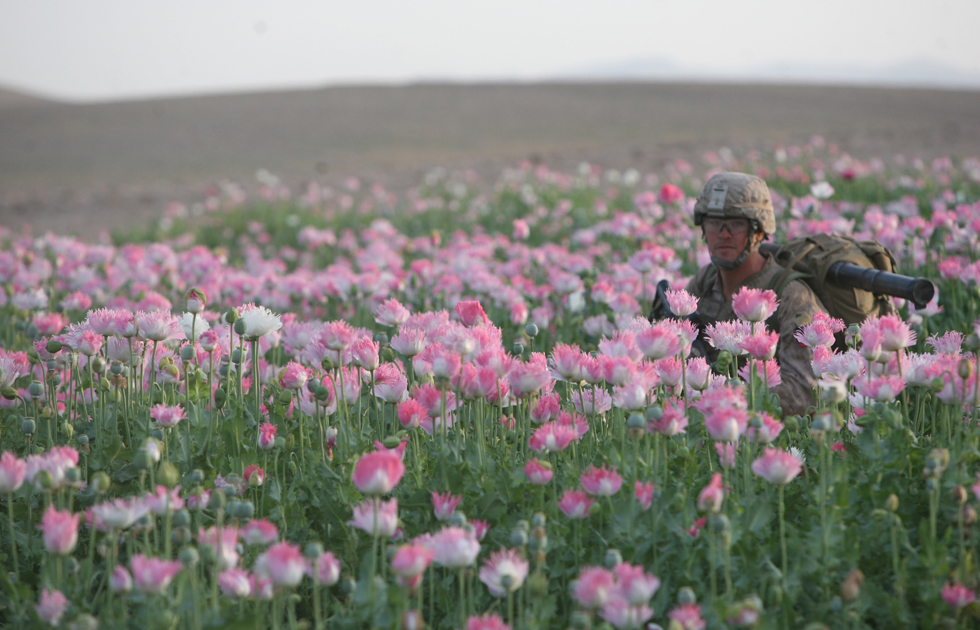 U.S. Marine Corps Lance Cpl. John K. Silvernail with Golf Company, 2D Battalion, 5th Marine Regiment, Regimental Combat Team 6, takes a knee in a field of poppy during a halt in a security patrol in Musa Qal’eh, Helmand province, Afghanistan, April 16, 2012. Marines conducted the patrol to disrupt enemy tactics in the battle space. (U.S. Marine Corps Photo by Lance Cpl. Chistopher M. Paulton/Released)
U.S. Marine Corps Lance Cpl. John K. Silvernail with Golf Company, 2D Battalion, 5th Marine Regiment, Regimental Combat Team 6, takes a knee in a field of poppy during a halt in a security patrol in Musa Qal’eh, Helmand province, Afghanistan, April 16, 2012. Marines conducted the patrol to disrupt enemy tactics in the battle space. (U.S. Marine Corps Photo by Lance Cpl. Chistopher M. Paulton/Released)
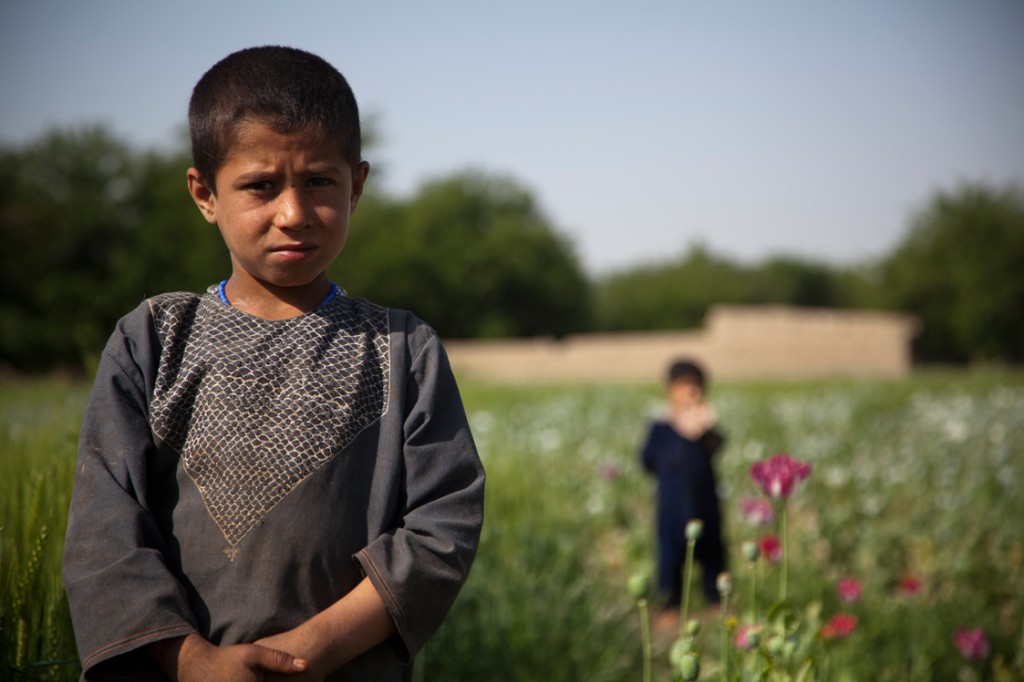 An Afghan boy stands watch over his family’s poppy and wheat fields as U.S. Marines with Bravo Company, 1st Battalion, 7th Marine Regiment, Regimental Combat Team 6 patrol by in Sangin, Helmand province, Afghanistan April 24, 2012. Marines conducted the patrol to interact with the local populace and gather information on enemy activity in the area.
An Afghan boy stands watch over his family’s poppy and wheat fields as U.S. Marines with Bravo Company, 1st Battalion, 7th Marine Regiment, Regimental Combat Team 6 patrol by in Sangin, Helmand province, Afghanistan April 24, 2012. Marines conducted the patrol to interact with the local populace and gather information on enemy activity in the area.
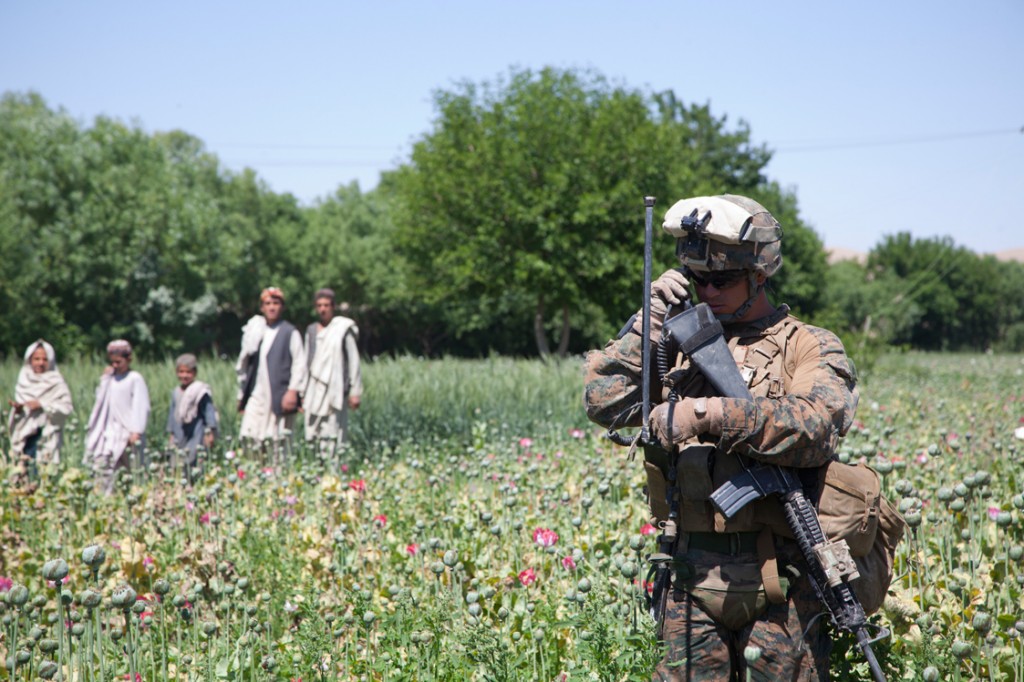 U.S. Marine Corps Sgt. Noel Rodriguez, a team leader with Alpha Company, 1st Battalion, 7th Marine Regiment, Regimental Combat Team 6, communicates with an adjacent squad while on patrol in Sangin, Helmand province, Afghanistan, May 1, 2012. Marines patrolled to provide security in the area and interact with the local populace.
U.S. Marine Corps Sgt. Noel Rodriguez, a team leader with Alpha Company, 1st Battalion, 7th Marine Regiment, Regimental Combat Team 6, communicates with an adjacent squad while on patrol in Sangin, Helmand province, Afghanistan, May 1, 2012. Marines patrolled to provide security in the area and interact with the local populace.
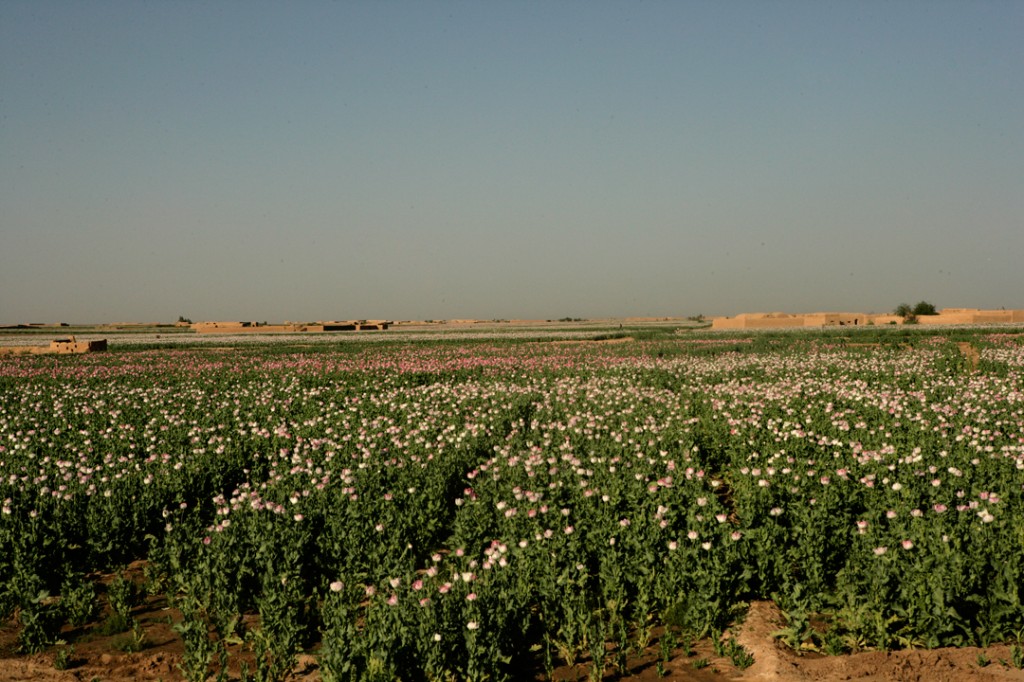 A field filled with opium poppy plants can be seen April 11, 2012, in Marjah, Afghanistan. Heroin is derived from raw opium gum, which comes from opium poppies. (U.S. Marine Corps photo by Sgt Michael P. Snody)
A field filled with opium poppy plants can be seen April 11, 2012, in Marjah, Afghanistan. Heroin is derived from raw opium gum, which comes from opium poppies. (U.S. Marine Corps photo by Sgt Michael P. Snody)
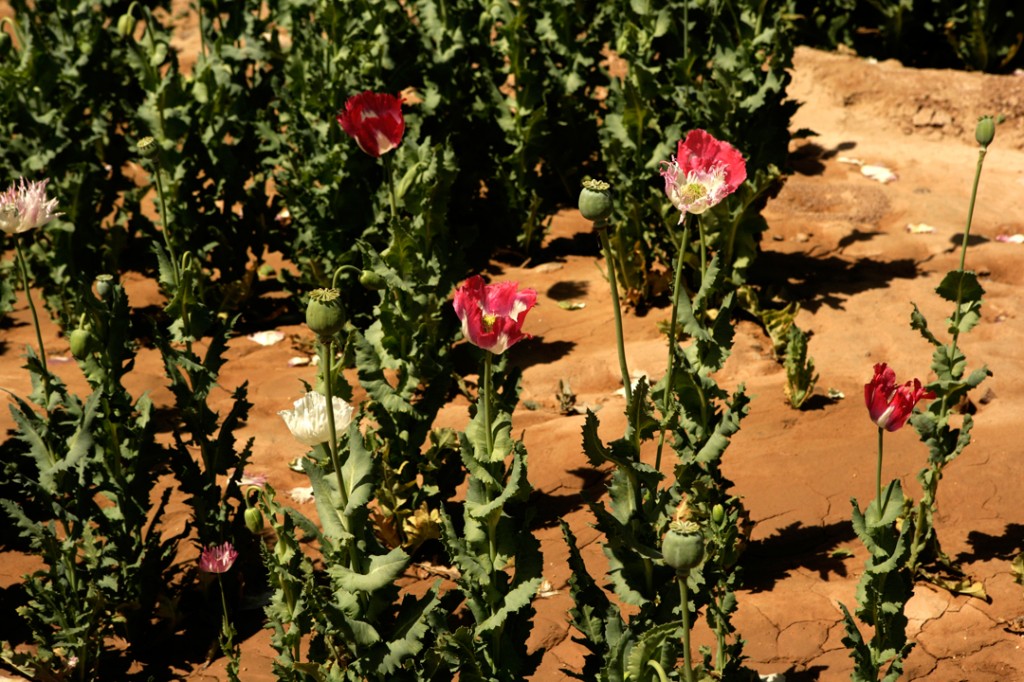 A field filled with opium poppy plants can be seen April 11, 2012, in Marjah, Afghanistan. Heroin is derived from raw opium gum, which comes from opium poppies. (U.S. Marine Corps photo by Sgt Michael P. Snody)
A field filled with opium poppy plants can be seen April 11, 2012, in Marjah, Afghanistan. Heroin is derived from raw opium gum, which comes from opium poppies. (U.S. Marine Corps photo by Sgt Michael P. Snody)
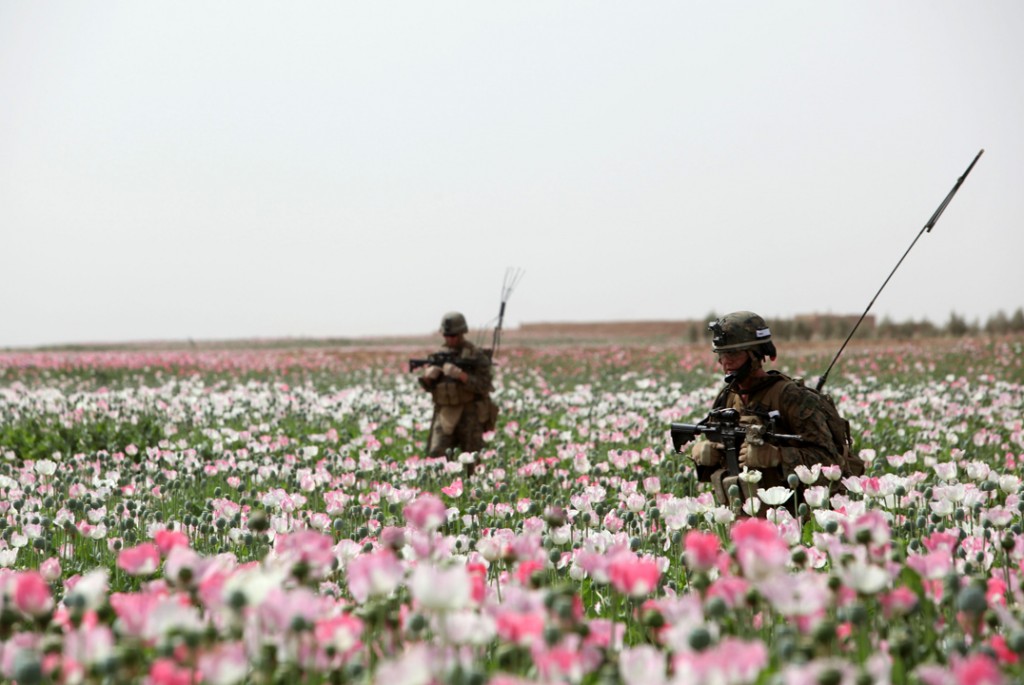 U.S. Marines with Combined Anti-Armor Team (CAAT), Weapons Company, 2D Battalion, 9th Marine Regiment, Regimental Combat Team 5, conduct a satellite patrol through a poppy field in Marjah, Afghanistan, April 16, 2012. CAAT patrolled over a five day period to erect Patrol Base Sledgehammer Four and disrupt insurgent activity in the area. (U.S. Marine Corps photo by Lance Cpl. David A. Perez/Released)
U.S. Marines with Combined Anti-Armor Team (CAAT), Weapons Company, 2D Battalion, 9th Marine Regiment, Regimental Combat Team 5, conduct a satellite patrol through a poppy field in Marjah, Afghanistan, April 16, 2012. CAAT patrolled over a five day period to erect Patrol Base Sledgehammer Four and disrupt insurgent activity in the area. (U.S. Marine Corps photo by Lance Cpl. David A. Perez/Released)
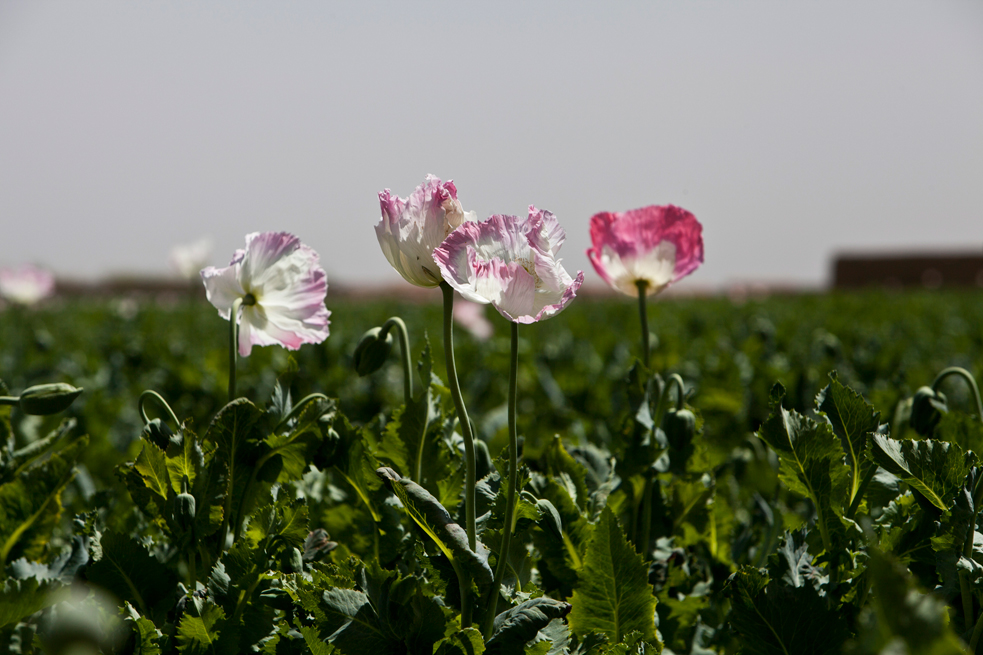 Landscape photo of poppy flowers in Habib Abad, Helmand province, Afghanistan, April 4, 2012. U.S. Marines and Afghanistan National Army soldiers conducted a patrol to disrupt insurgency activity.
Landscape photo of poppy flowers in Habib Abad, Helmand province, Afghanistan, April 4, 2012. U.S. Marines and Afghanistan National Army soldiers conducted a patrol to disrupt insurgency activity.
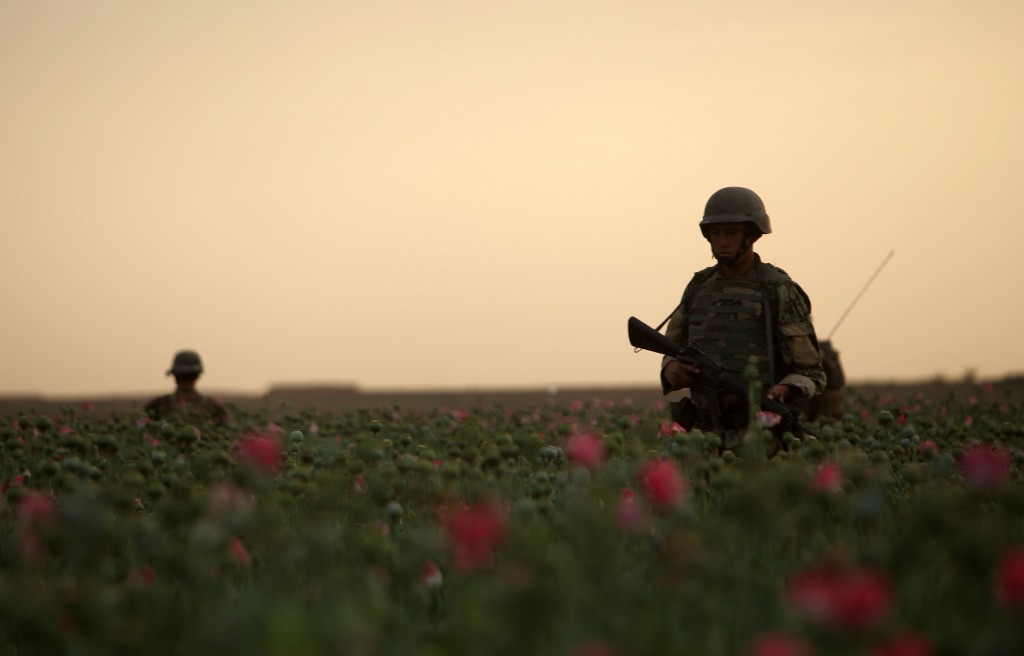 Afghan National Army (ANA) soldier conducts a satellite patrol, April 17, 2012, Marjah, Afghanistan. The ANA took part of a 5 day operation to erect Patrol Base Sledgehammer 4 to disrupt the insurgence activity in the area. (U.S. Marine Corps photo by Lance Cpl. David A. Perez/Released)
Afghan National Army (ANA) soldier conducts a satellite patrol, April 17, 2012, Marjah, Afghanistan. The ANA took part of a 5 day operation to erect Patrol Base Sledgehammer 4 to disrupt the insurgence activity in the area. (U.S. Marine Corps photo by Lance Cpl. David A. Perez/Released)
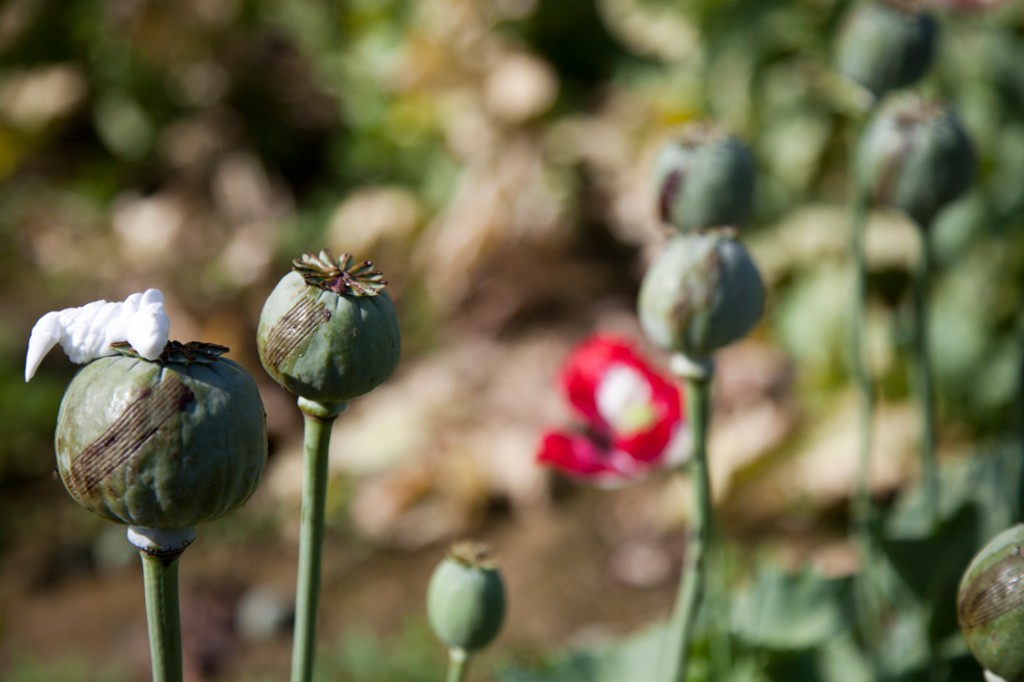 Scored poppy plants await the final harvest in Sangin, Helmand province, Afghanistan April 24, 2012. The annual poppy harvest yields the largest profit of the year for local Afghan farmers, ultimately resulting in 90 percent of the world’s opium supply.
Scored poppy plants await the final harvest in Sangin, Helmand province, Afghanistan April 24, 2012. The annual poppy harvest yields the largest profit of the year for local Afghan farmers, ultimately resulting in 90 percent of the world’s opium supply.
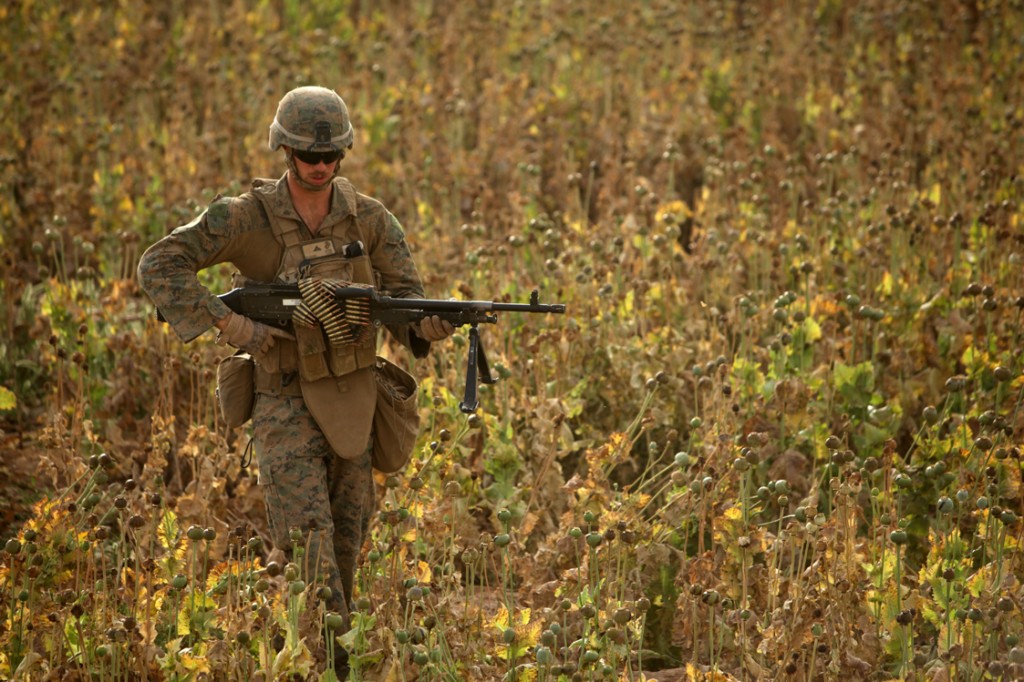 Scored poppy plants await the final harvest in Sangin, Helmand province, Afghanistan April 24, 2012. The annual poppy harvest yields the largest profit of the year for local Afghan farmers, ultimately resulting in 90 percent of the world’s opium supply.
Scored poppy plants await the final harvest in Sangin, Helmand province, Afghanistan April 24, 2012. The annual poppy harvest yields the largest profit of the year for local Afghan farmers, ultimately resulting in 90 percent of the world’s opium supply.
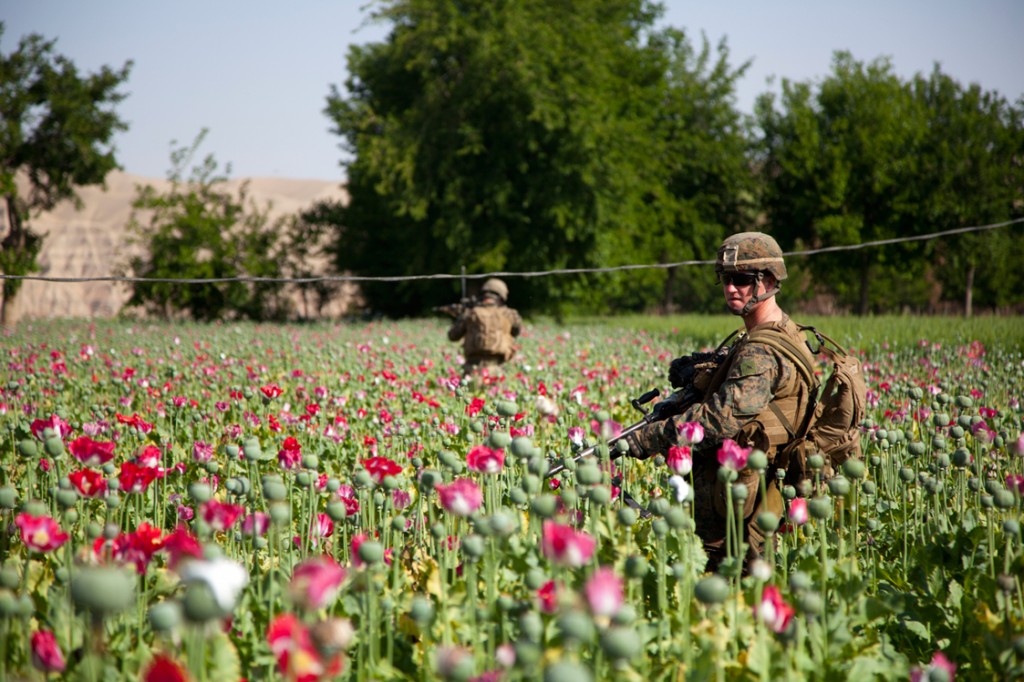 U.S. Marine Corps Lance Cpl. Michael Hanley, right, a machine gunner with 2D Squad, 1st Platoon, Bravo Company, 1st Battalion, 7th Marine Regiment, Regimental Combat Team 6, patrols through a field of poppy outside of Patrol Base Fires, Helmand province, Afghanistan April 24, 2012. Marines conducted the patrol to interact with the local populace and gather information on enemy activity in the area.
U.S. Marine Corps Lance Cpl. Michael Hanley, right, a machine gunner with 2D Squad, 1st Platoon, Bravo Company, 1st Battalion, 7th Marine Regiment, Regimental Combat Team 6, patrols through a field of poppy outside of Patrol Base Fires, Helmand province, Afghanistan April 24, 2012. Marines conducted the patrol to interact with the local populace and gather information on enemy activity in the area.
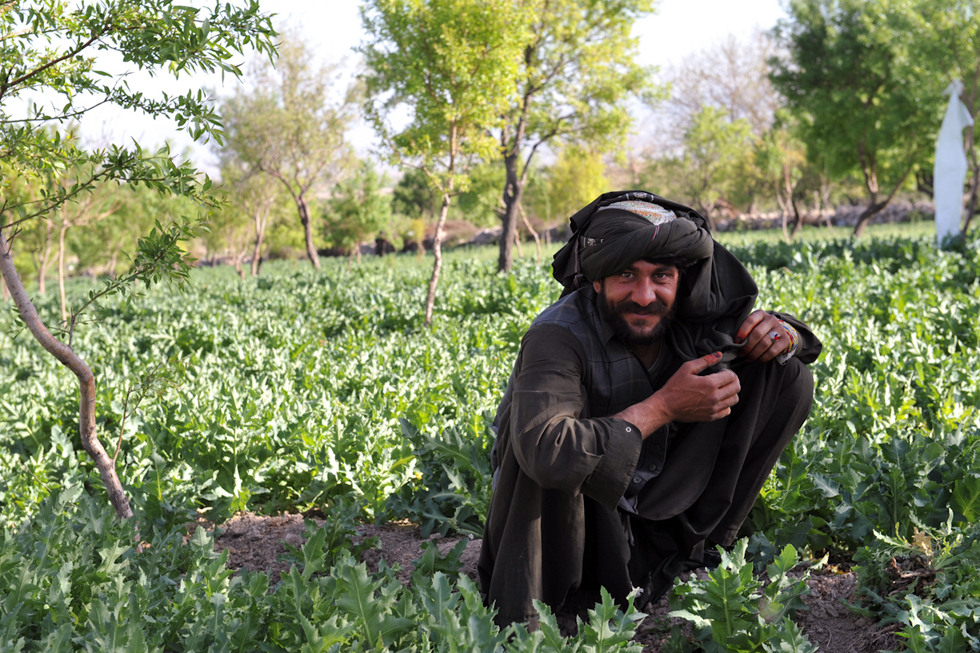 An Afghan farmer watches from a poppy field as the 288th Sapper Company, a National Guard Unit out of Houston, Miss., performs a dismounted patrol in the Uzugan province in southern Afghanistan, April 2, 2012. Dismounted patrols, in conjunction with their route clearance missions, have lead to a significant decrease in insurgent activity in the Dorifshan and Baluchi valleys and an increase in not only the safety and security of the coalition and Afghan Security Forces, but also helped the unit form a bond with the local Afghan civilians.
An Afghan farmer watches from a poppy field as the 288th Sapper Company, a National Guard Unit out of Houston, Miss., performs a dismounted patrol in the Uzugan province in southern Afghanistan, April 2, 2012. Dismounted patrols, in conjunction with their route clearance missions, have lead to a significant decrease in insurgent activity in the Dorifshan and Baluchi valleys and an increase in not only the safety and security of the coalition and Afghan Security Forces, but also helped the unit form a bond with the local Afghan civilians.
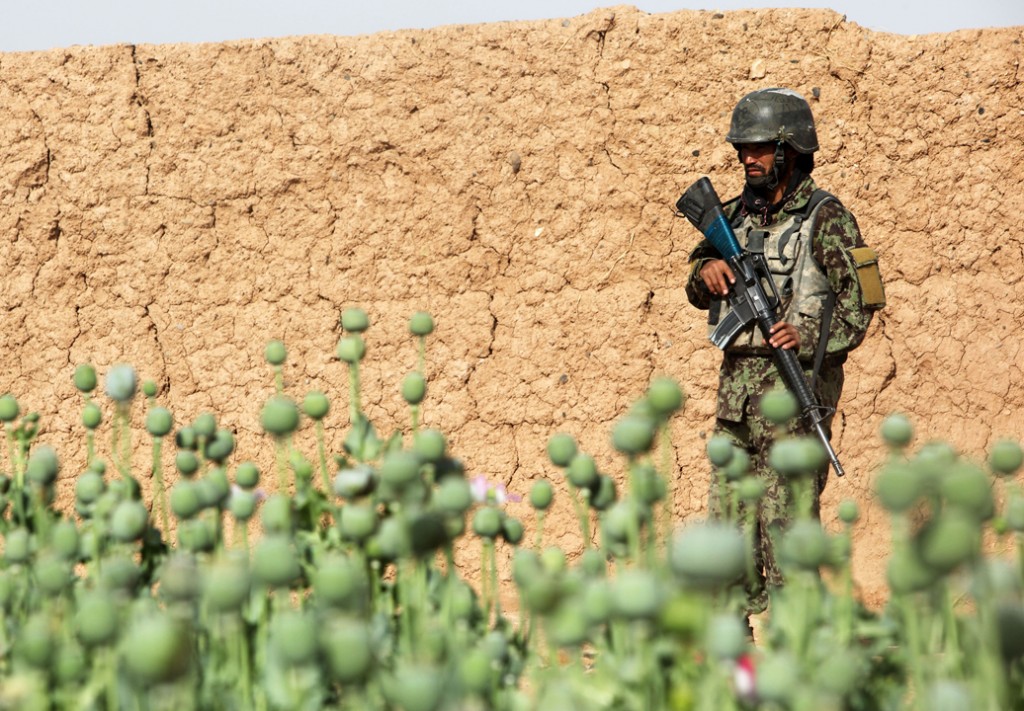 An Afghan National Army (ANA) soldier provides security during a satellite patrol along a poppy field in Marjah, Afghanistan, April 17, 2012. The ANA took part in a five day partnered operation to erect Patrol Base Sledgehammer Four and disrupt insurgent activity in the area. (U.S. Marine Corps photo by Lance Cpl. David A. Perez/Released)
An Afghan National Army (ANA) soldier provides security during a satellite patrol along a poppy field in Marjah, Afghanistan, April 17, 2012. The ANA took part in a five day partnered operation to erect Patrol Base Sledgehammer Four and disrupt insurgent activity in the area. (U.S. Marine Corps photo by Lance Cpl. David A. Perez/Released)
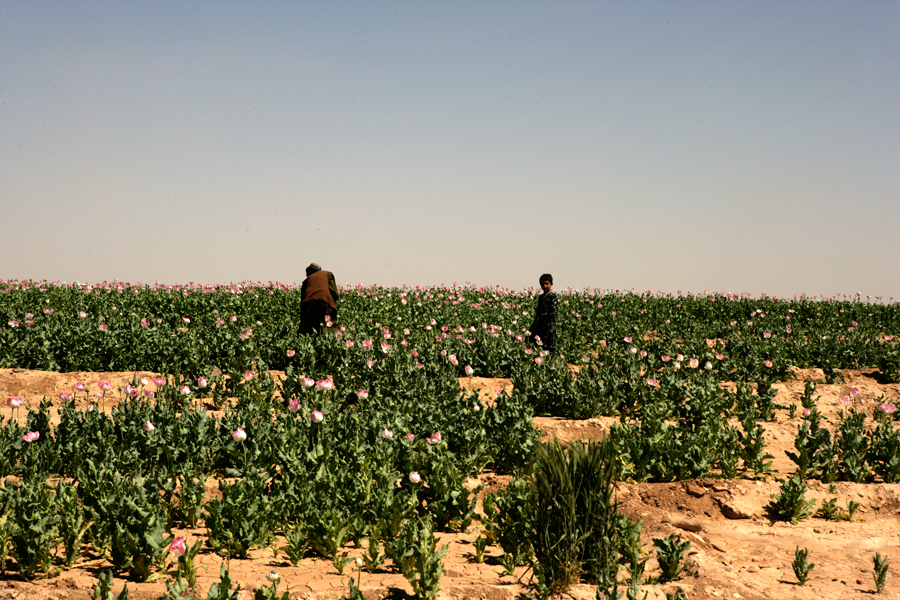 A field filled with opium poppy plants can be seen April 11, 2012, in Marjah, Afghanistan. Heroin is derived from raw opium gum, which comes from opium poppies. (U.S. Marine Corps photo by Sgt Michael P. Snody)
A field filled with opium poppy plants can be seen April 11, 2012, in Marjah, Afghanistan. Heroin is derived from raw opium gum, which comes from opium poppies. (U.S. Marine Corps photo by Sgt Michael P. Snody)
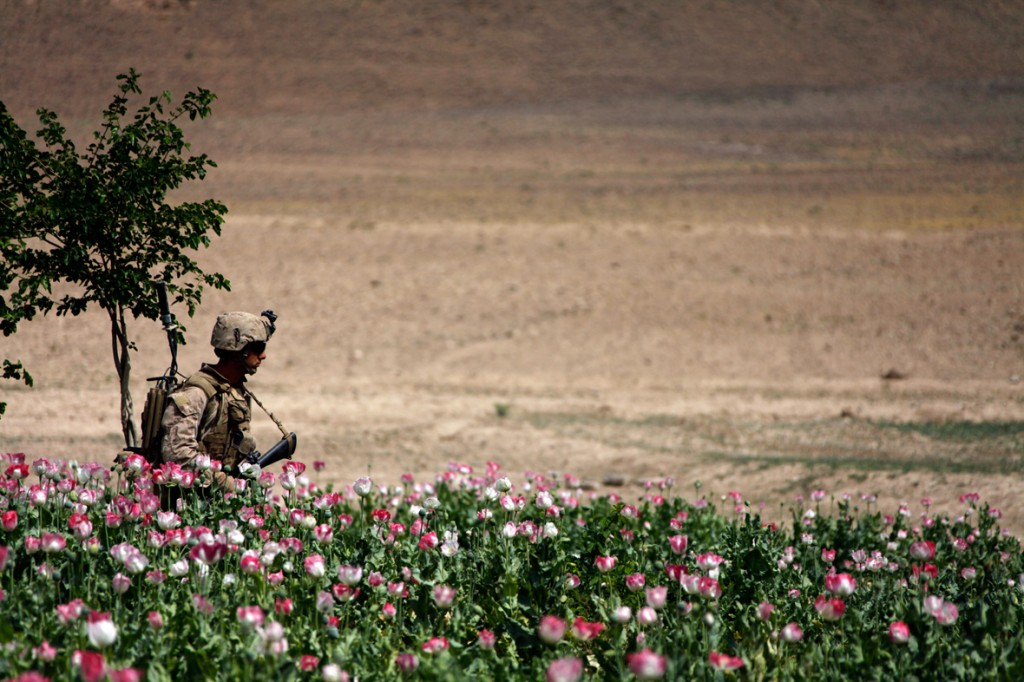 A U.S. Marine with Charlie Company, 1st Battalion, 8th Marine Regiment, Regimental Combat Team 6 walks through a poppy field during a security patrol in Gorazan Valley, Helmand province, Afghanistan, April 17, 2012. Marines conducted the patrol in search of suspected enemy fighters. (U.S. Marine Corps photo by Cpl. Andrew J. Good)
A U.S. Marine with Charlie Company, 1st Battalion, 8th Marine Regiment, Regimental Combat Team 6 walks through a poppy field during a security patrol in Gorazan Valley, Helmand province, Afghanistan, April 17, 2012. Marines conducted the patrol in search of suspected enemy fighters. (U.S. Marine Corps photo by Cpl. Andrew J. Good)
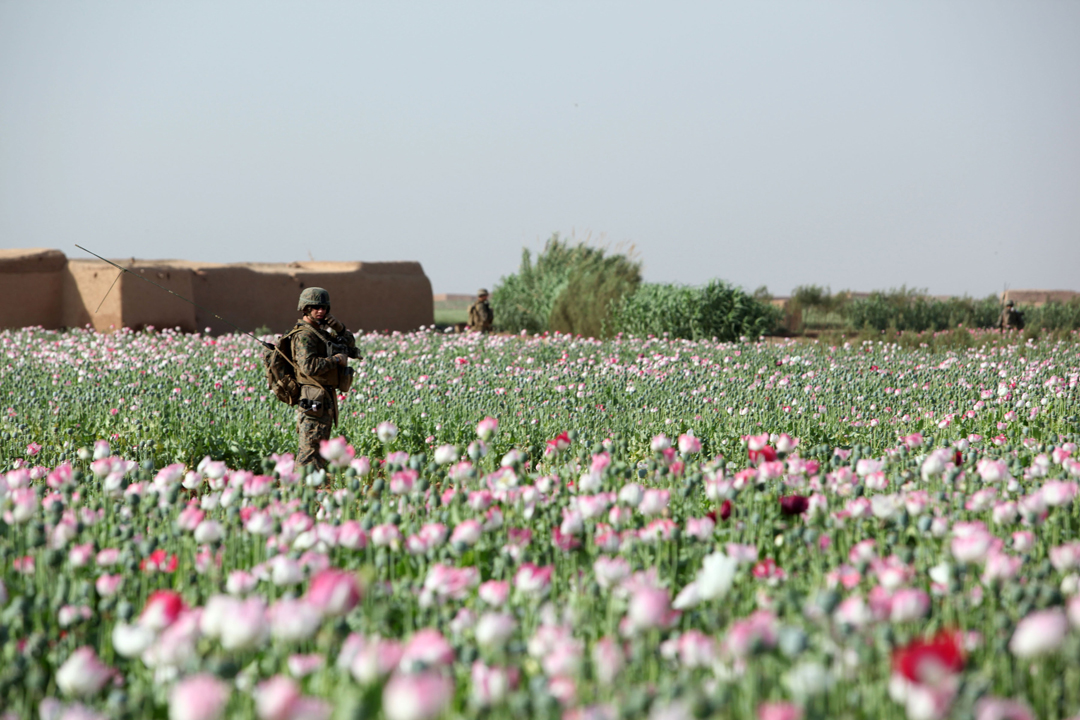 U.S. Marines with Combined Anti-Armor Team, Weapons Company, 2nd Battalion, 9th Marine Regiment, Regimental Combat Team 5, conduct a satellite patrol through a poppy field in Marjah, Afghanistan, April 19, 2012. CAAT conducted a five day partnered operation to erect Patrol Base Sledgehammer Four and disrupt insurgent activity in the area. (U.S. Marine Corps photo by Lance Cpl. David A. Perez)
U.S. Marines with Combined Anti-Armor Team, Weapons Company, 2nd Battalion, 9th Marine Regiment, Regimental Combat Team 5, conduct a satellite patrol through a poppy field in Marjah, Afghanistan, April 19, 2012. CAAT conducted a five day partnered operation to erect Patrol Base Sledgehammer Four and disrupt insurgent activity in the area. (U.S. Marine Corps photo by Lance Cpl. David A. Perez)
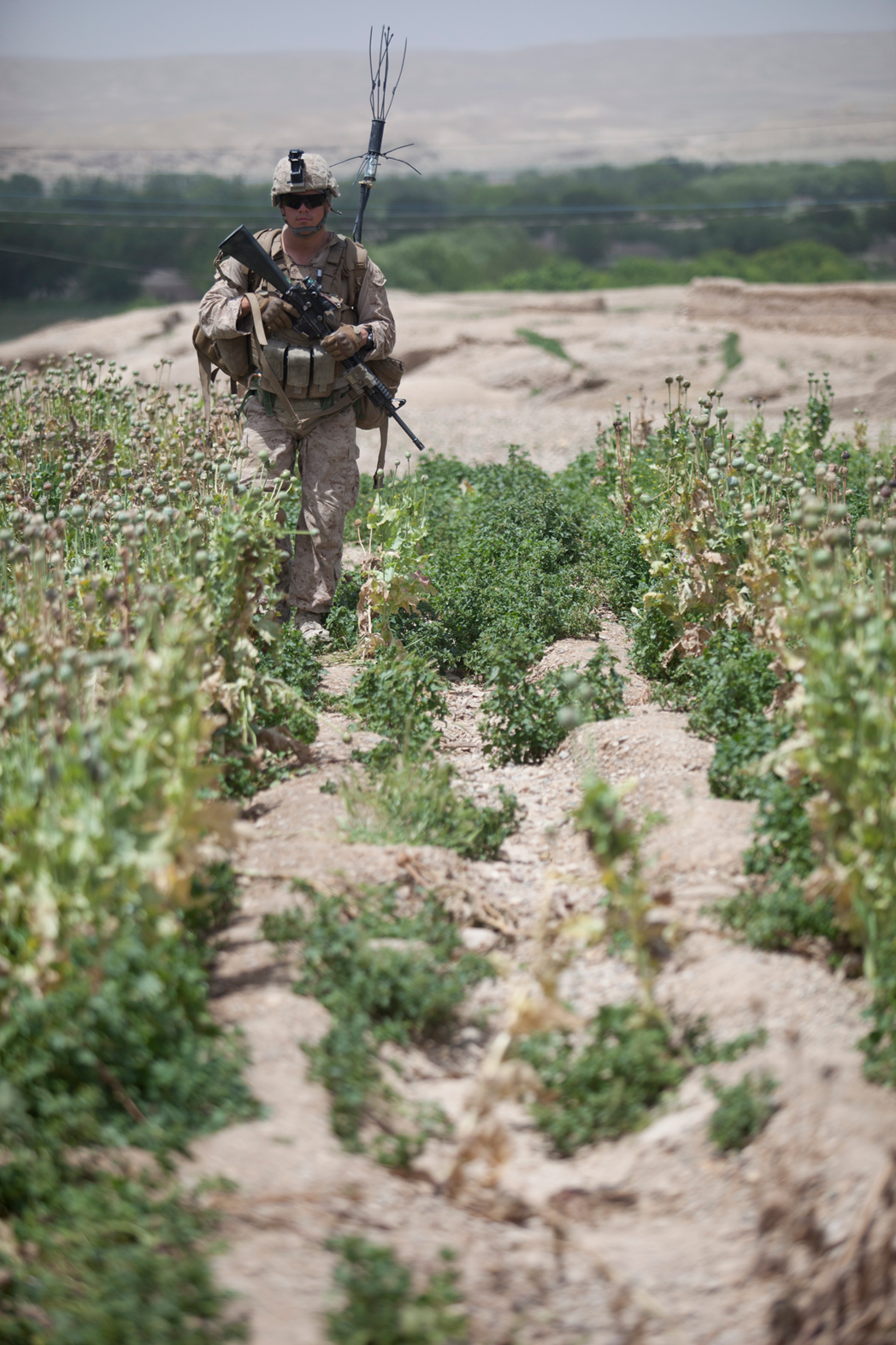 U.S. Marine Corps Lance Cpl. Nicholas Gonzalez, a machine gunner with 2nd Squad, 2nd Platoon, Charlie Company, 1st Battalion, 7th Marine Regiment, Regimental Combat Team 6, patrols through a poppy field in Sangin, Helmand province, Afghanistan, April 27, 2012. Marines conducted the patrol to provide security in the area and interact with the local population.
U.S. Marine Corps Lance Cpl. Nicholas Gonzalez, a machine gunner with 2nd Squad, 2nd Platoon, Charlie Company, 1st Battalion, 7th Marine Regiment, Regimental Combat Team 6, patrols through a poppy field in Sangin, Helmand province, Afghanistan, April 27, 2012. Marines conducted the patrol to provide security in the area and interact with the local population.
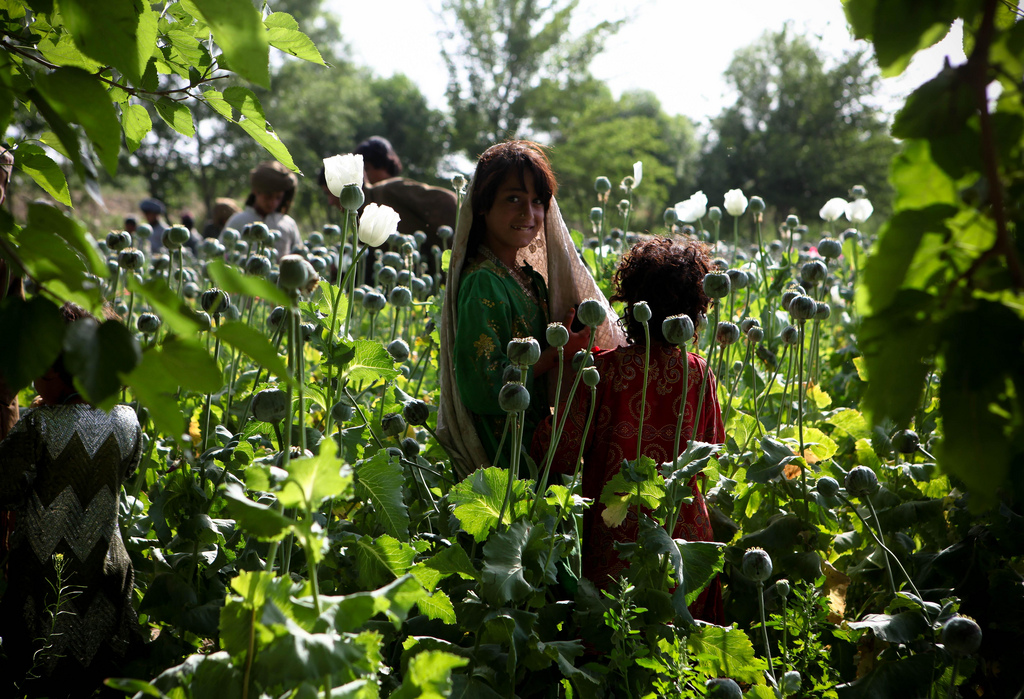 PATROL BASE SHARK, Helmand province, Islamic Republic of Afghanistan – A small girl looks back after receiving a candy bar from a Marine outside the base. The Marines give these small gifts to help gain the trust of young children, who are the future of Afghanistan. The children have become much more receptive to Marines after a decade in the country.
PATROL BASE SHARK, Helmand province, Islamic Republic of Afghanistan – A small girl looks back after receiving a candy bar from a Marine outside the base. The Marines give these small gifts to help gain the trust of young children, who are the future of Afghanistan. The children have become much more receptive to Marines after a decade in the country.
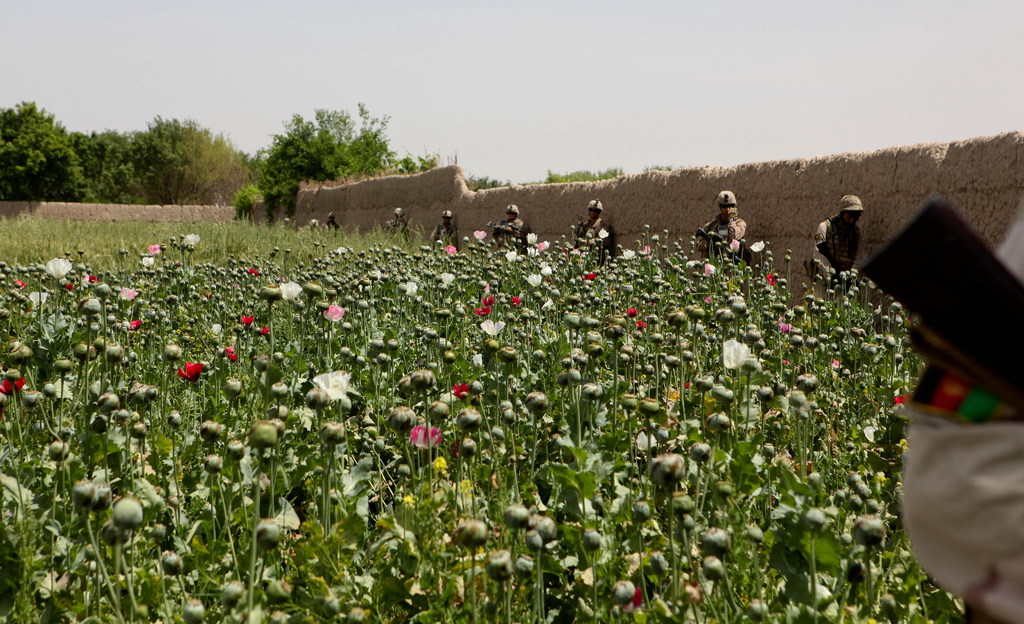 PATROL BASE SHARK, Helmand province, Islamic Republic of Afghanistan – Marines and Afghan National Army soldiers patrol through farmlands outside the base recently. Behind the small poppy field in the front of the photo is a wheat field. The local farmers are growing more and more of the wheat as an alternative to growing the illegal poppy.
PATROL BASE SHARK, Helmand province, Islamic Republic of Afghanistan – Marines and Afghan National Army soldiers patrol through farmlands outside the base recently. Behind the small poppy field in the front of the photo is a wheat field. The local farmers are growing more and more of the wheat as an alternative to growing the illegal poppy.
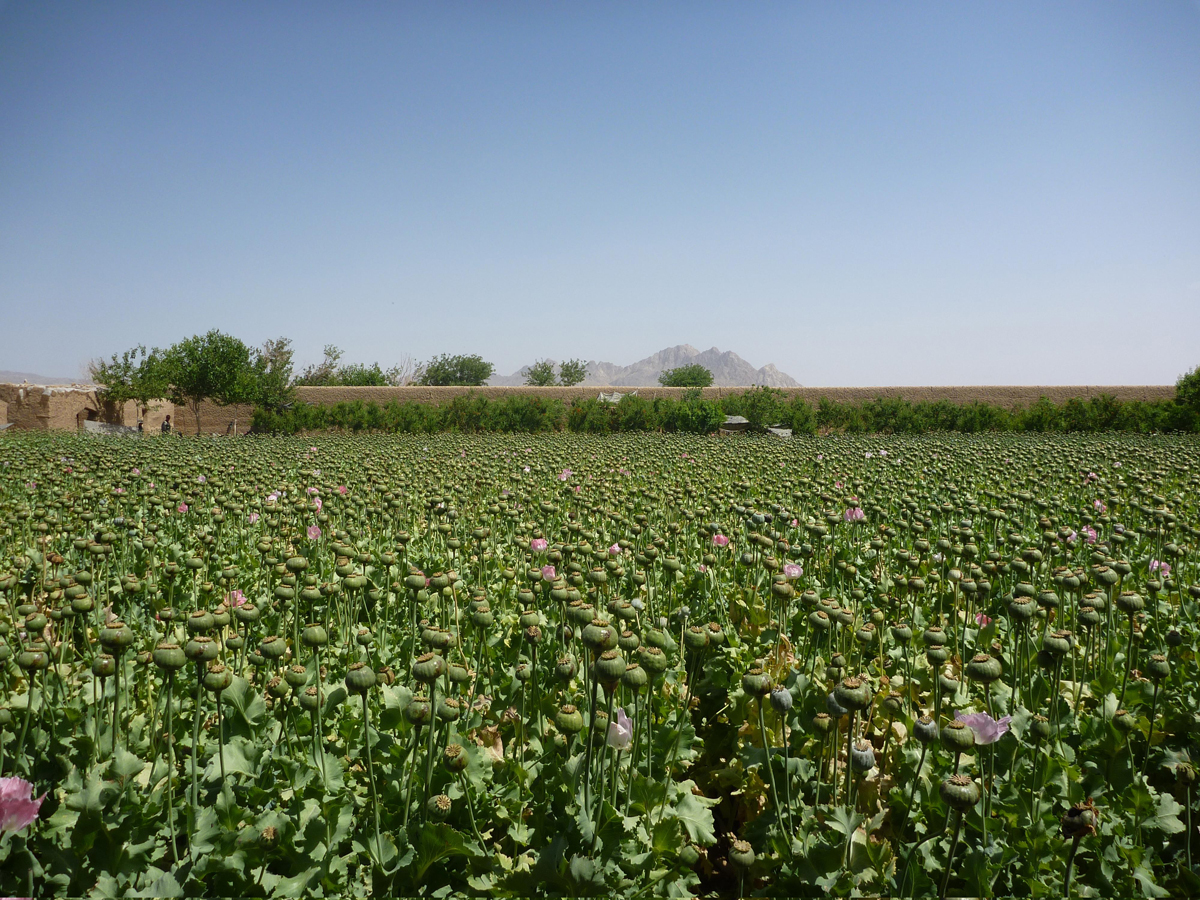 Poppies grow in a field in the Maiwand district, Kandahar province, Afghanistan, May 2, 2011. (U.S. Army photo by Sgt. Dillon Townsel/Released)
Poppies grow in a field in the Maiwand district, Kandahar province, Afghanistan, May 2, 2011. (U.S. Army photo by Sgt. Dillon Townsel/Released)
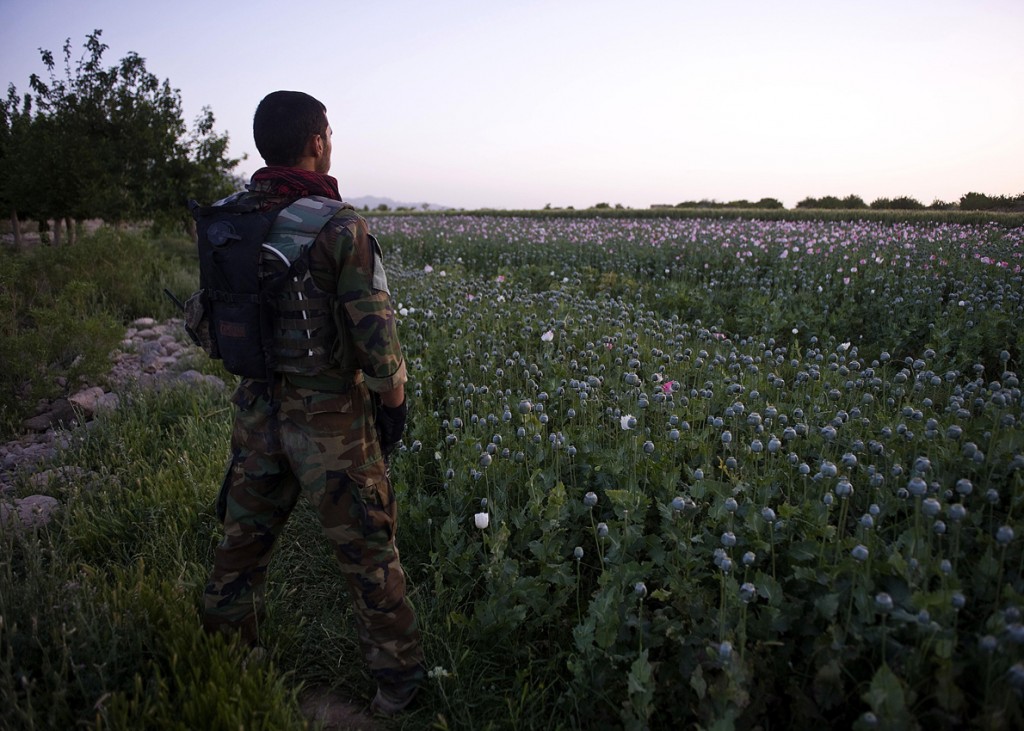 An Afghan commando with the Afghan National Army’s 3rd Commando Kandak scans the surrounding area for enemy activity during a clearing operation in Maiwand District, May 1, Kandahar province, Afghanistan. The commandos, joined by Navy SEALs team members with Special Operations Task Force – South and members of the Afghan National Civil Order Police, destroyed an IED and recovered IED making materials and a weapons cache during the operation.
An Afghan commando with the Afghan National Army’s 3rd Commando Kandak scans the surrounding area for enemy activity during a clearing operation in Maiwand District, May 1, Kandahar province, Afghanistan. The commandos, joined by Navy SEALs team members with Special Operations Task Force – South and members of the Afghan National Civil Order Police, destroyed an IED and recovered IED making materials and a weapons cache during the operation.
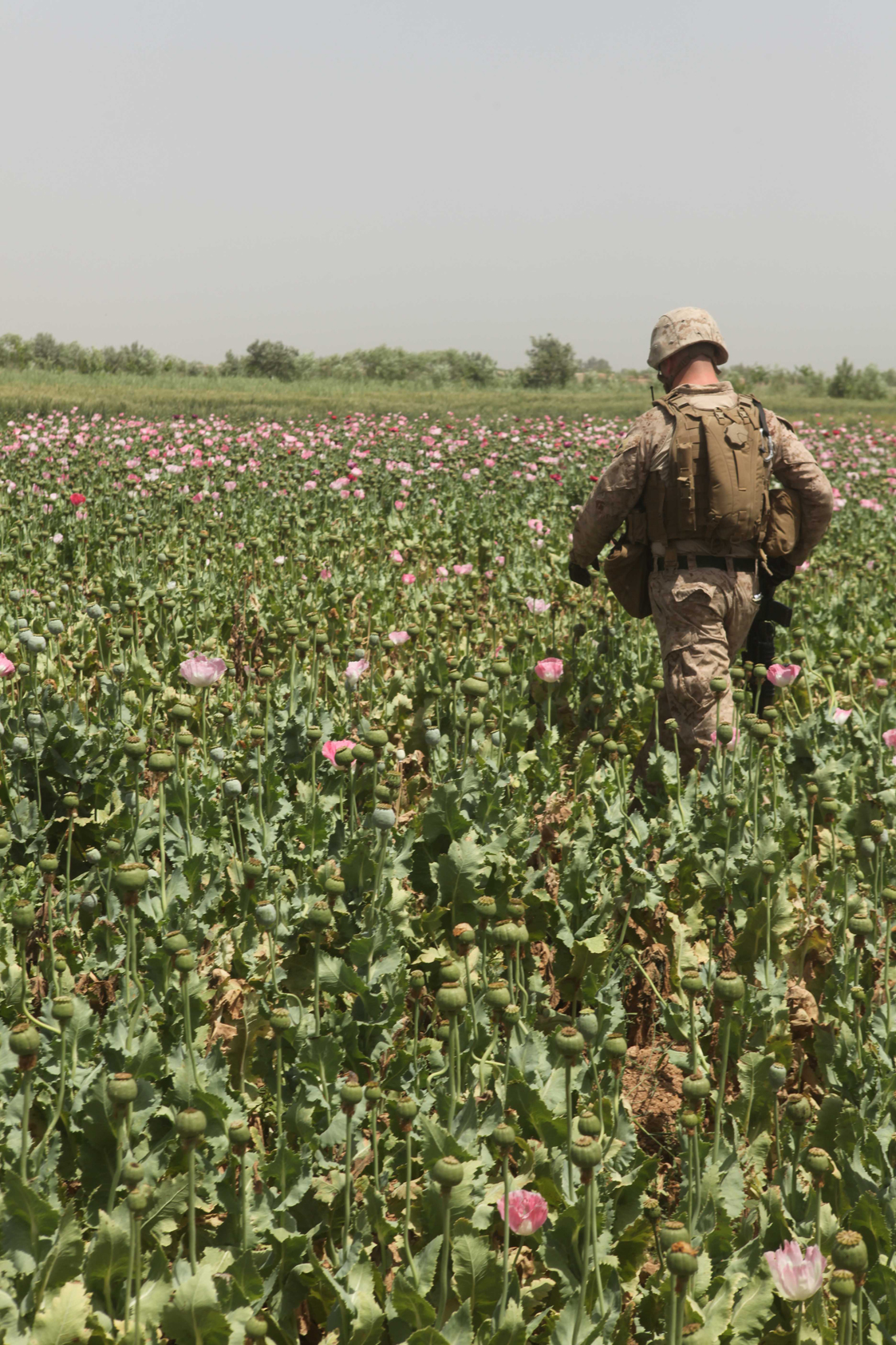 U.S. Marine Corps Lance Cpl. Jason Phillips crosses a poppy field as Marines conduct a security patrol outside Forward Operating Base Hanson, Marjah, Afghanistan, April 30, 2011. The security patrol was done in order for Marines to inspect the well being of a nearby village. Phillips is with Guard Force, 2nd Battalion, 8th Marines, Regimental Combat Team 1. (U.S. Marine Corps photo by Lance Cpl. Alberto B. Vazquez/Released)
U.S. Marine Corps Lance Cpl. Jason Phillips crosses a poppy field as Marines conduct a security patrol outside Forward Operating Base Hanson, Marjah, Afghanistan, April 30, 2011. The security patrol was done in order for Marines to inspect the well being of a nearby village. Phillips is with Guard Force, 2nd Battalion, 8th Marines, Regimental Combat Team 1. (U.S. Marine Corps photo by Lance Cpl. Alberto B. Vazquez/Released)
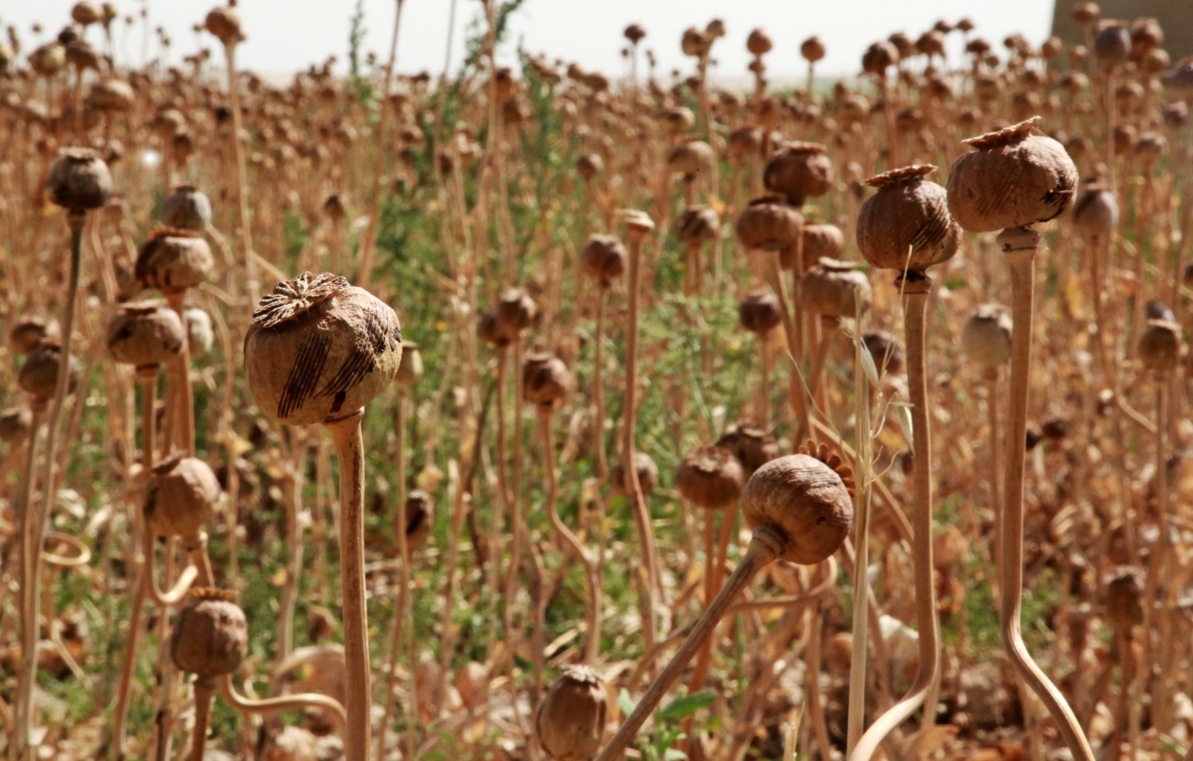 Dried out opium poppy plants occupy a field at Khan Neshin, Afghanistan, May 27, 2011. Afghan farmers harvest the scorn poppy bulbs from the plant to produce opium paste. (U.S. Marine Corps photo by Cpl. Charles T. Mabry II/Released)
Dried out opium poppy plants occupy a field at Khan Neshin, Afghanistan, May 27, 2011. Afghan farmers harvest the scorn poppy bulbs from the plant to produce opium paste. (U.S. Marine Corps photo by Cpl. Charles T. Mabry II/Released)
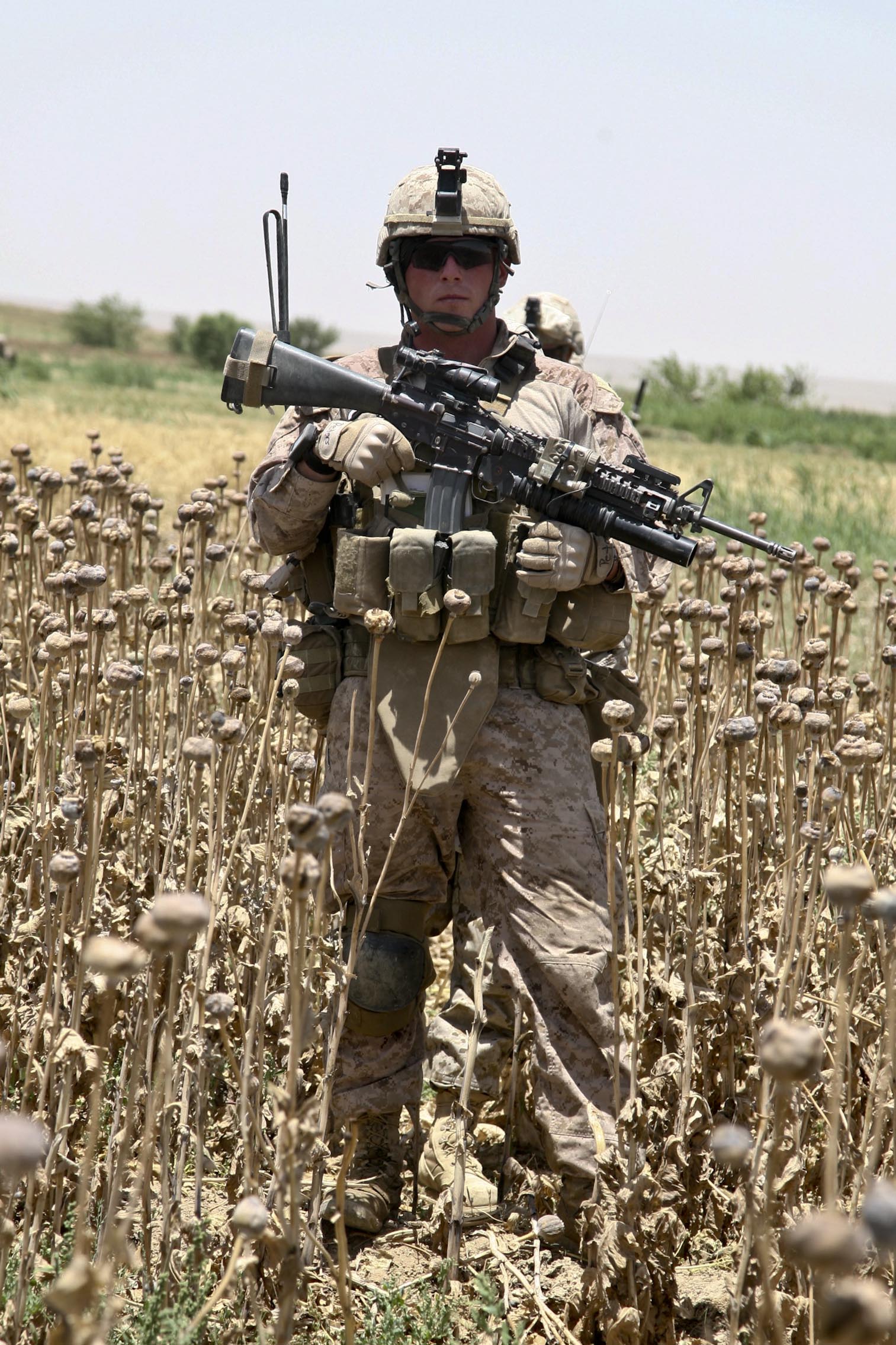 U.S. Marine Corps Cpl. James K. Peters stands in an opium poppy field while performing a foot patrol at Sangin, Afghanistan, May 19, 2011. Peters and his fellow Marines assigned to Weapons Company, 3rd Battalion, 4th Marine Regiment, Regimental Combat Team 8, are familiarizing the battalion?s commander with their area of operation during the patrol. (U.S. Marine Corps photo by Cpl. Jeremy C. Harris/Released)
U.S. Marine Corps Cpl. James K. Peters stands in an opium poppy field while performing a foot patrol at Sangin, Afghanistan, May 19, 2011. Peters and his fellow Marines assigned to Weapons Company, 3rd Battalion, 4th Marine Regiment, Regimental Combat Team 8, are familiarizing the battalion?s commander with their area of operation during the patrol. (U.S. Marine Corps photo by Cpl. Jeremy C. Harris/Released)
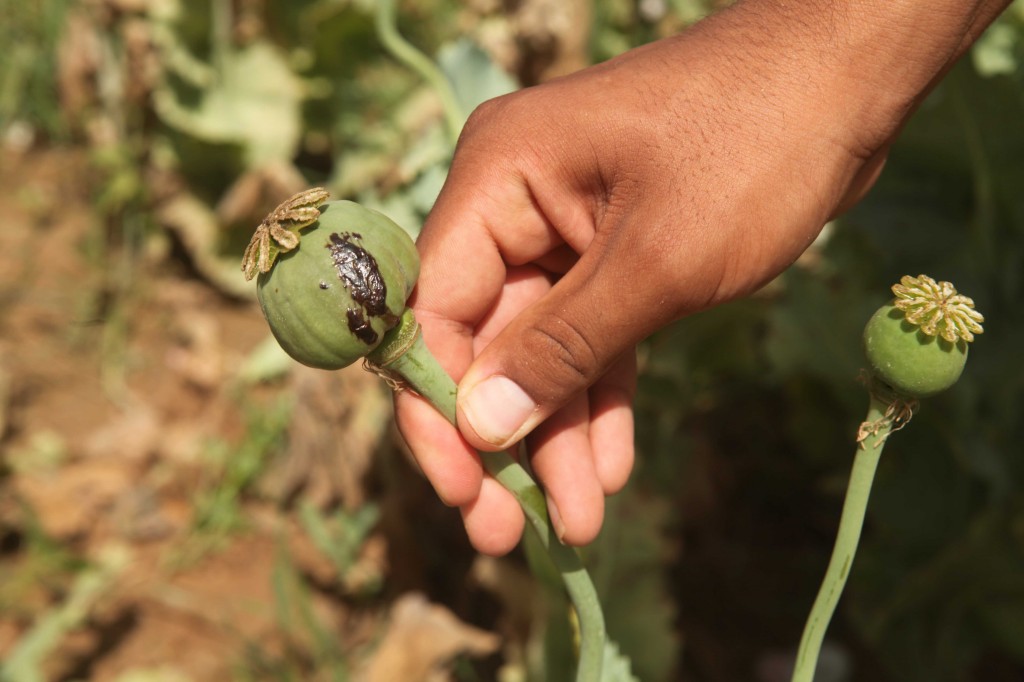 A U.S. Marine displays a poppy flower after its been scored as Marines conduct a security patrol outside Forward Operating Base Hanson, Marjah, Afghanistan, April 30, 2011. The security patrol was done in order for Marines to inspect the well being of a nearby village. The Marines are with Guard Force, 2nd Battalion, 8th Marines, Regimental Combat Team 1. (U.S. Marine Corps photo by Lance Cpl. Alberto B. Vazquez/Released)
A U.S. Marine displays a poppy flower after its been scored as Marines conduct a security patrol outside Forward Operating Base Hanson, Marjah, Afghanistan, April 30, 2011. The security patrol was done in order for Marines to inspect the well being of a nearby village. The Marines are with Guard Force, 2nd Battalion, 8th Marines, Regimental Combat Team 1. (U.S. Marine Corps photo by Lance Cpl. Alberto B. Vazquez/Released)
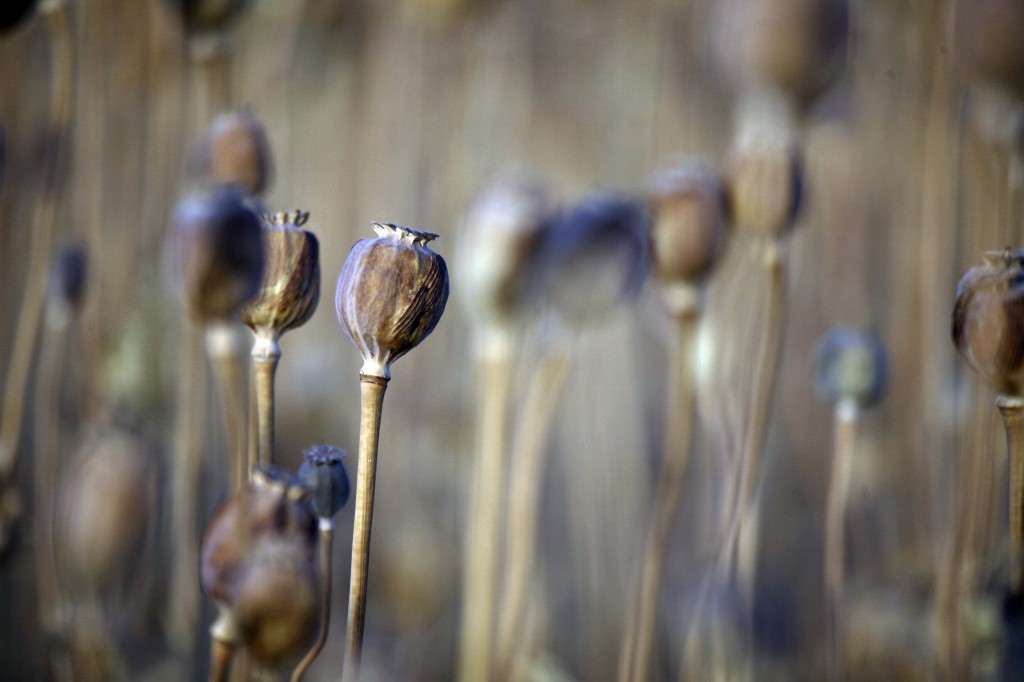 Dried, scored poppies remain after the harvest season as U.S. Marines with 1st Platoon, Bravo Company, 1st Battalion, 23rd Marine Regiment, Regimental Combat Team 1 conduct a patrol outside Combat Outpost (COP) Huskers in Helmand province, Afghanistan, May 22, 2011. The Marines patrolled outside the COP in order to maintain security and talk with villagers. (U.S. Marine Corps photo by Staff Sgt. Loren P. Molumby/Released)
Dried, scored poppies remain after the harvest season as U.S. Marines with 1st Platoon, Bravo Company, 1st Battalion, 23rd Marine Regiment, Regimental Combat Team 1 conduct a patrol outside Combat Outpost (COP) Huskers in Helmand province, Afghanistan, May 22, 2011. The Marines patrolled outside the COP in order to maintain security and talk with villagers. (U.S. Marine Corps photo by Staff Sgt. Loren P. Molumby/Released)
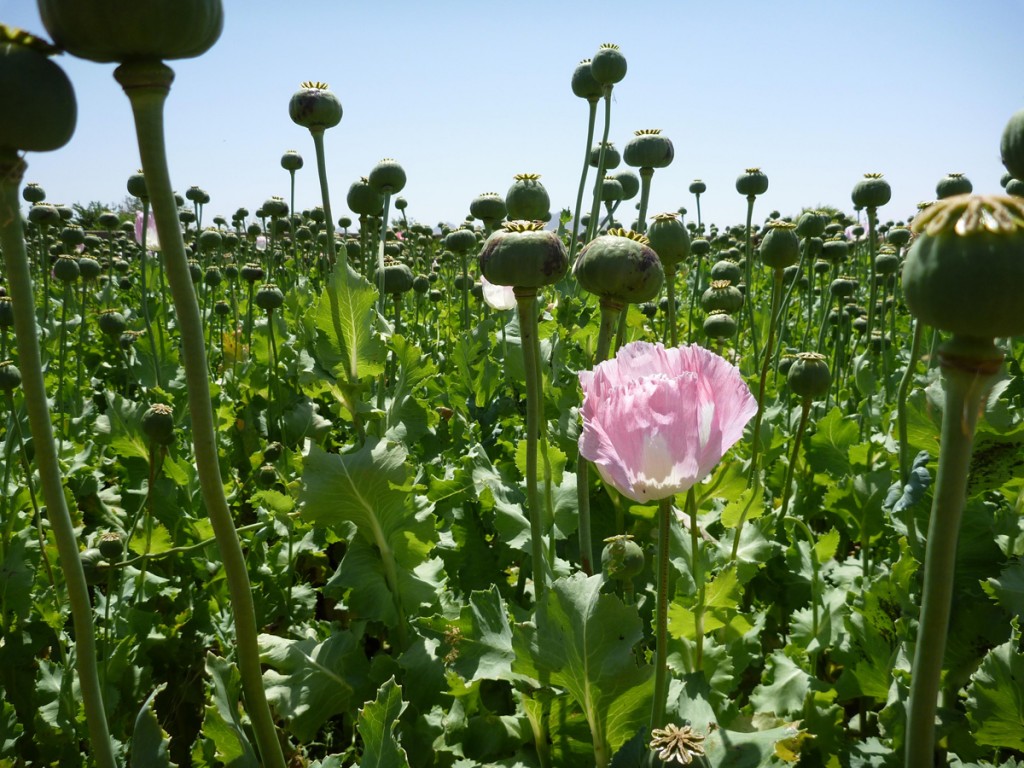 Poppy fields of the Maiwand District, taken May 2.
Poppy fields of the Maiwand District, taken May 2.
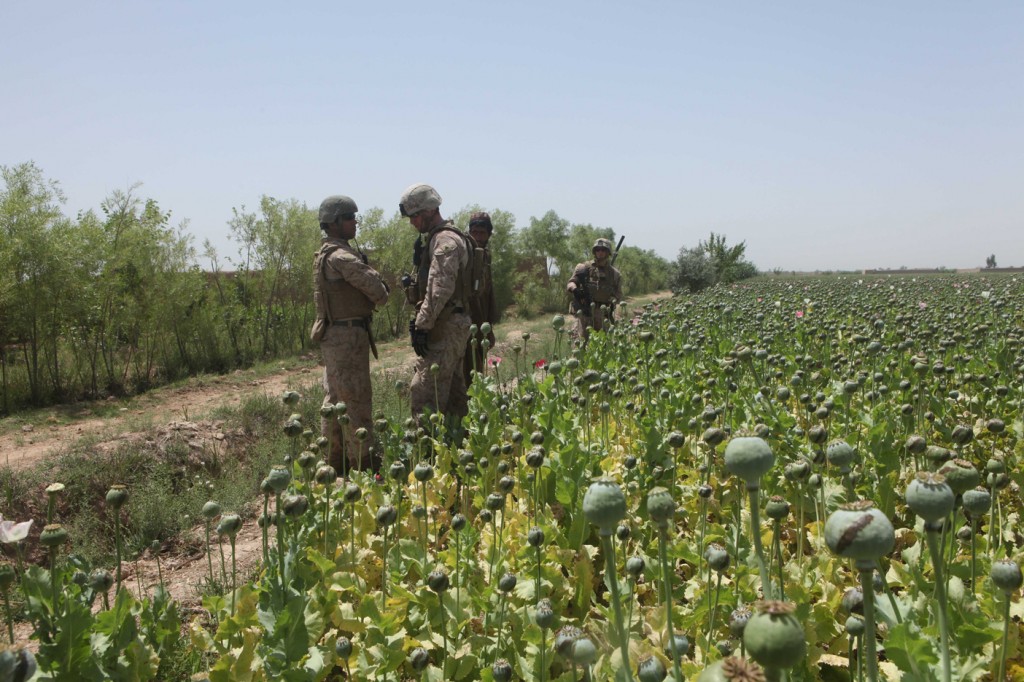 U.S. Marine Corps Cpl. Mathew J. Gilabriest speaks with a villager as Marines conduct a security patrol outside Forward Operating Base Hanson, Marjah, Afghanistan, April 30, 2011. The security patrol was done in order for Marines to inspect the well being of a nearby village. Gilabriest is with Guard Force, 2nd Battalion, 8th Marines, Regimental Combat Team 1. (U.S. Marine Corps photo by Lance Cpl. Alberto B. Vazquez/Released)
U.S. Marine Corps Cpl. Mathew J. Gilabriest speaks with a villager as Marines conduct a security patrol outside Forward Operating Base Hanson, Marjah, Afghanistan, April 30, 2011. The security patrol was done in order for Marines to inspect the well being of a nearby village. Gilabriest is with Guard Force, 2nd Battalion, 8th Marines, Regimental Combat Team 1. (U.S. Marine Corps photo by Lance Cpl. Alberto B. Vazquez/Released)
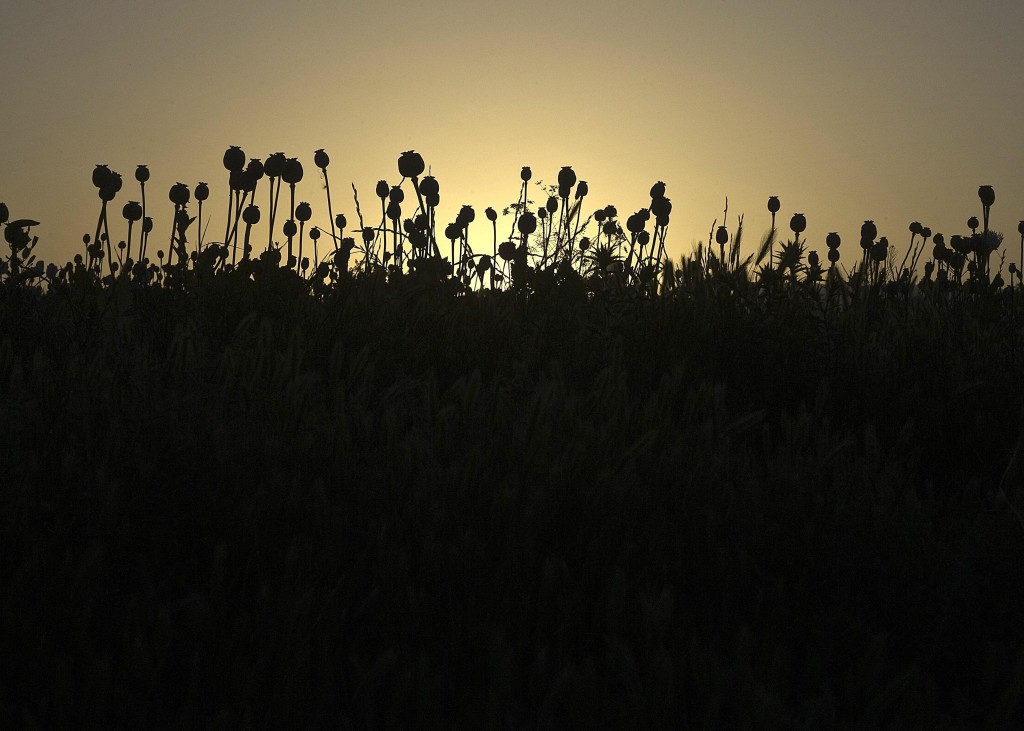 The sun rises over a poppy field during a clearing operation conducted by Afghan Commandos with the Afghan National Army’s 3rd Commando Kandak in Maiwand District, May 1, Kandahar province, Afghanistan. The commandos, joined by Navy SEALs team members with Special Operations Task Force South and members of the Afghan National Civil Order Police, destroyed an IED and recovered IED making materials and a weapons cache during the operation.
The sun rises over a poppy field during a clearing operation conducted by Afghan Commandos with the Afghan National Army’s 3rd Commando Kandak in Maiwand District, May 1, Kandahar province, Afghanistan. The commandos, joined by Navy SEALs team members with Special Operations Task Force South and members of the Afghan National Civil Order Police, destroyed an IED and recovered IED making materials and a weapons cache during the operation.
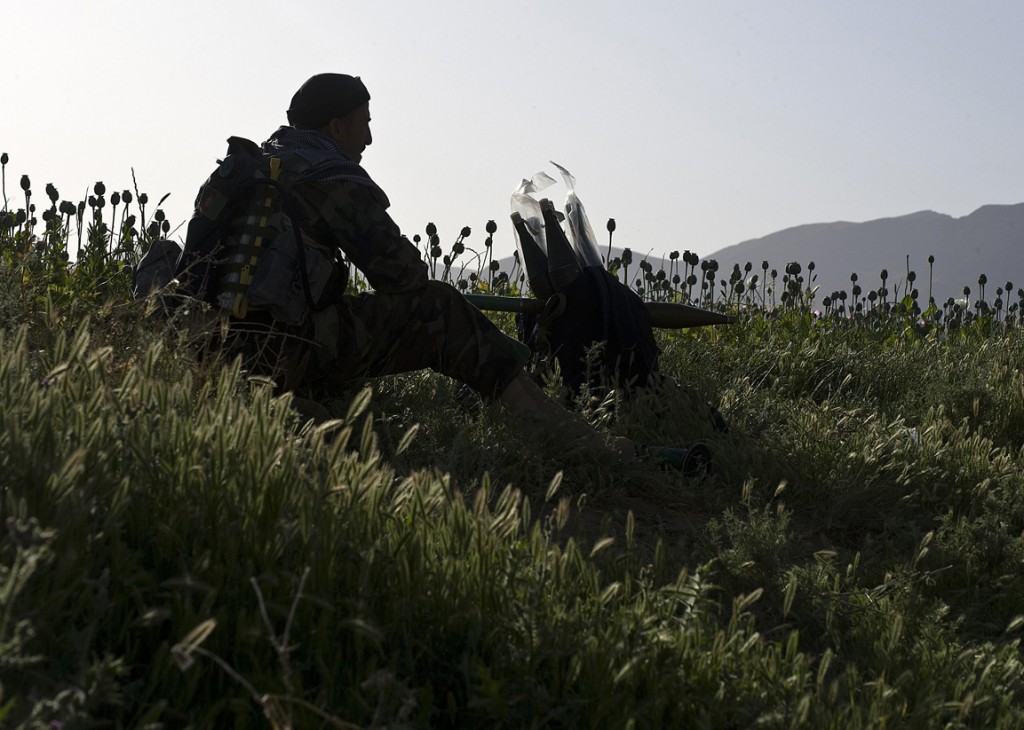 An Afghan commando with the Afghan National Army’s 3rd Commando Kandak scans the surrounding area for enemy activity during a clearing operation in Maiwand District, May 1, Kandahar province, Afghanistan. The commandos, joined by Navy SEALs team members with Special Operations Task Force – South and members of the Afghan National Civil Order Police, destroyed an IED and recovered IED making materials and a weapons cache during the operation.
An Afghan commando with the Afghan National Army’s 3rd Commando Kandak scans the surrounding area for enemy activity during a clearing operation in Maiwand District, May 1, Kandahar province, Afghanistan. The commandos, joined by Navy SEALs team members with Special Operations Task Force – South and members of the Afghan National Civil Order Police, destroyed an IED and recovered IED making materials and a weapons cache during the operation.
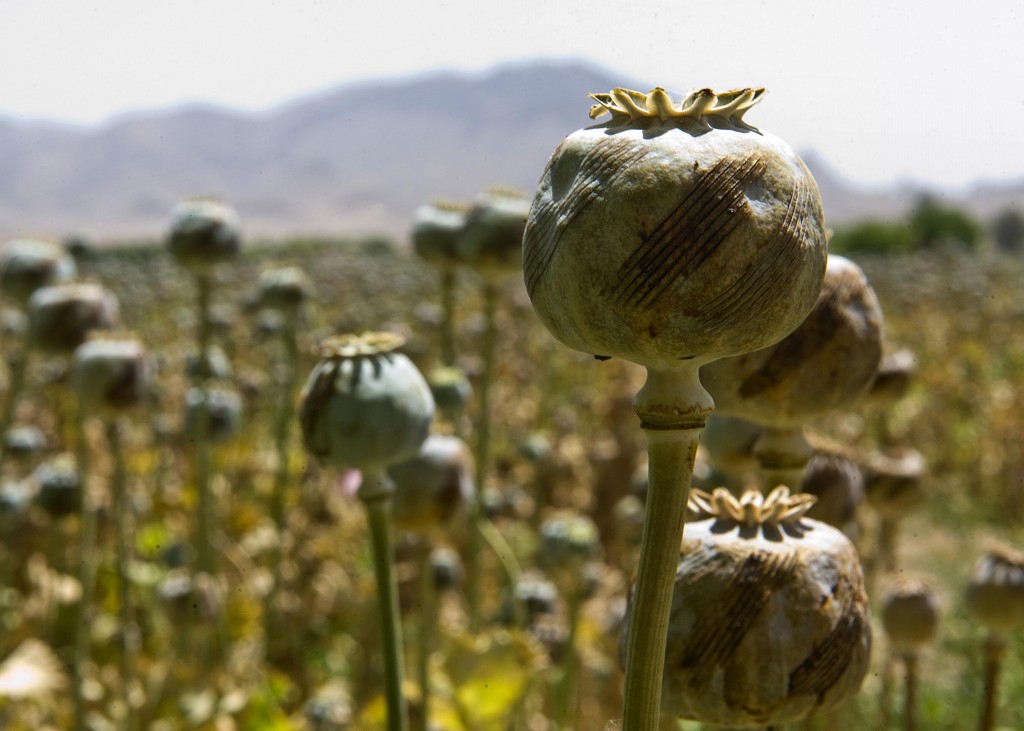 A field of scored poppies, as seen during a clearing operation conducted by Afghan commandos with the Afghan National Army’s 3rd Commando Kandak in Maiwand district, May 1, Kandahar province, Afghanistan. Poppy is cultivated and harvested for its powerful medicinal properties.
A field of scored poppies, as seen during a clearing operation conducted by Afghan commandos with the Afghan National Army’s 3rd Commando Kandak in Maiwand district, May 1, Kandahar province, Afghanistan. Poppy is cultivated and harvested for its powerful medicinal properties.
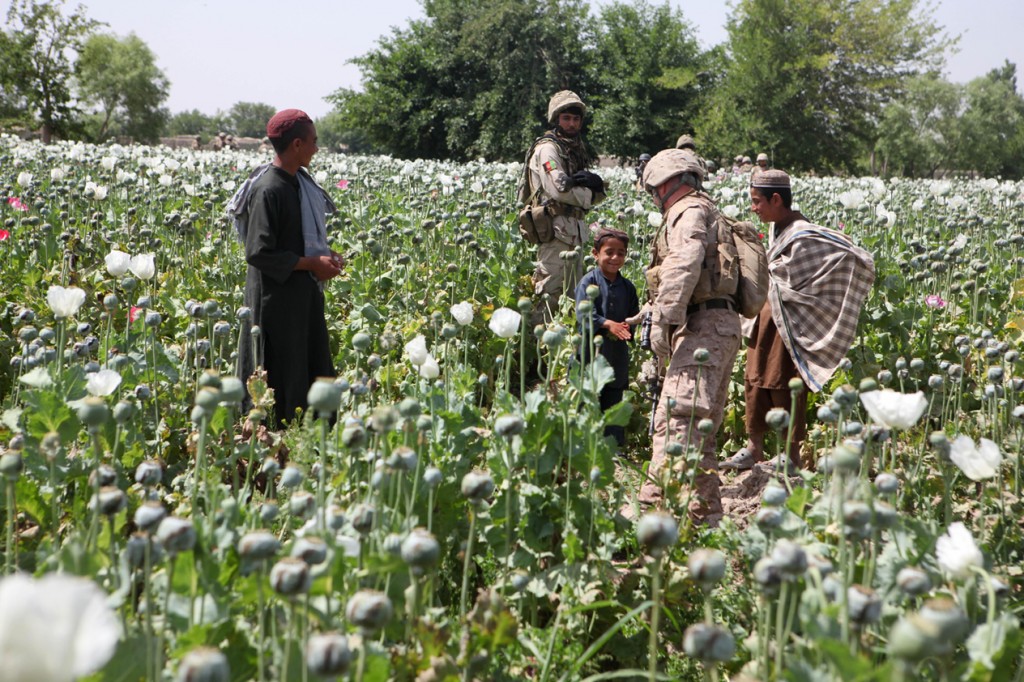 PATROL BASE SHARK, Helmand province, Islamic Republic of Afghanistan – A Marine with 3rd Battalion, 4th Marine Regiment, greets local children working in the farmlands near the base. The high-five exchanged is a symbol of the positive relationship the Marines have built with the local population.
PATROL BASE SHARK, Helmand province, Islamic Republic of Afghanistan – A Marine with 3rd Battalion, 4th Marine Regiment, greets local children working in the farmlands near the base. The high-five exchanged is a symbol of the positive relationship the Marines have built with the local population.
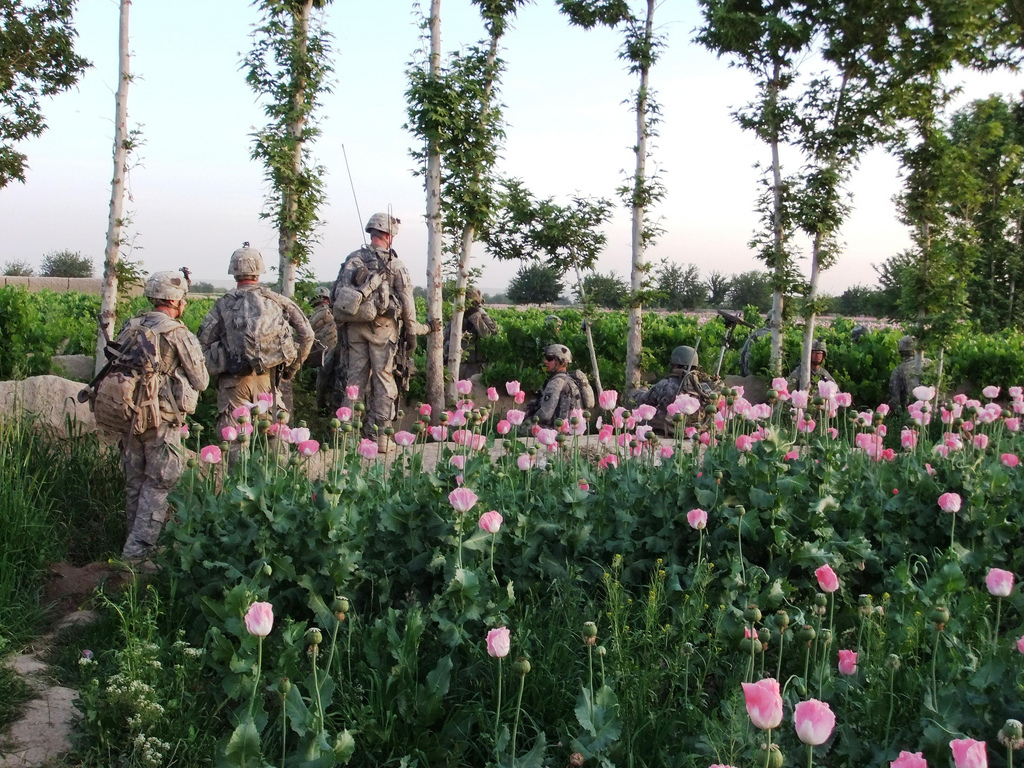 In this photo provided by ISAF Regional Command – South, during Operation Spartan Strike, 2nd Platoon, Company C, 2nd Battalion, 502nd Infantry Regiment, 101st Airborne Division (Air Assault), Thursday, April 21, cleared houses and questioned residents about Taliban activities and locations of weapons cashes in Zharay District, Afghanistan.
In this photo provided by ISAF Regional Command – South, during Operation Spartan Strike, 2nd Platoon, Company C, 2nd Battalion, 502nd Infantry Regiment, 101st Airborne Division (Air Assault), Thursday, April 21, cleared houses and questioned residents about Taliban activities and locations of weapons cashes in Zharay District, Afghanistan.
 U.S. Marine Corps Sgt. Eric Stump (3rd from left), a squad leader with with 1st Platoon, Company I, Battalion Landing Team 3/8, Regimental Combat Team 8, and his U.S. Marines discuss their route through a poppy field during a security patrol from their patrol base in Helmand province’s Green Zone, west of the Nahr-e Saraj canal, April 13. Elements of 26th Marine Expeditionary Unit deployed to Afghanistan to provide regional security in Helmand province in support of the International Security Assistance Force.
U.S. Marine Corps Sgt. Eric Stump (3rd from left), a squad leader with with 1st Platoon, Company I, Battalion Landing Team 3/8, Regimental Combat Team 8, and his U.S. Marines discuss their route through a poppy field during a security patrol from their patrol base in Helmand province’s Green Zone, west of the Nahr-e Saraj canal, April 13. Elements of 26th Marine Expeditionary Unit deployed to Afghanistan to provide regional security in Helmand province in support of the International Security Assistance Force.
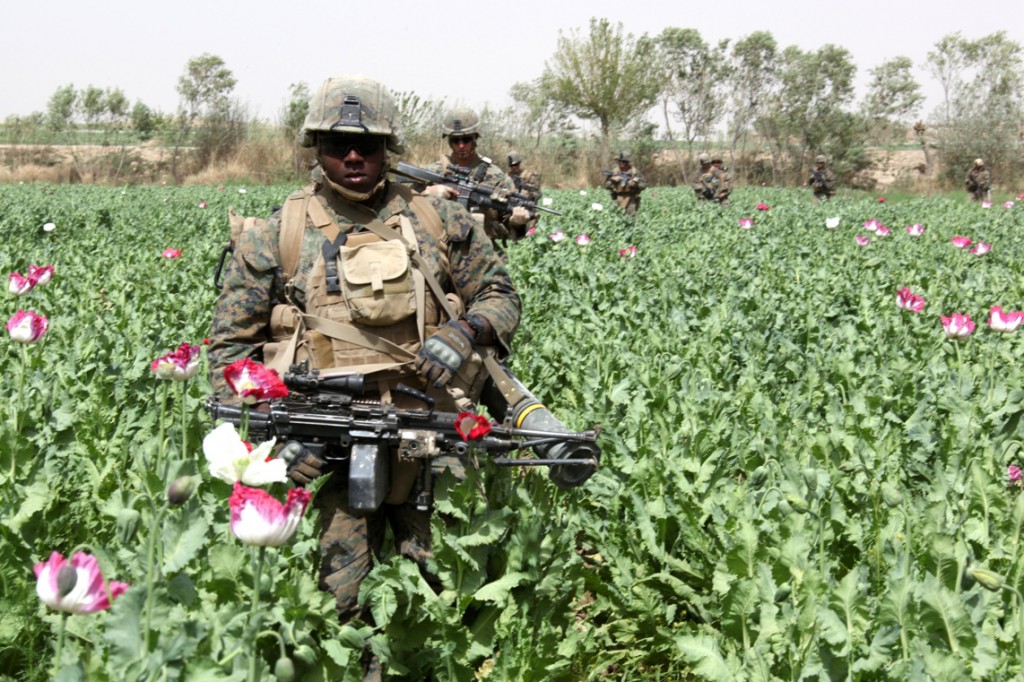 U.S. Marine Corps Lance Cpl. Antonio Wilccoxen, an M249 Squad Automatic Weapon gunner, and fellow U.S. Marines with 1st Platoon, Company I, Battalion Landing Team 3/8, Regimental Combat Team 8, walk through a poppy field during a security patrol from their patrol base in Helmand province’s Green Zone, west of the Nar-e Saraj canal, March 31. Elements of 26th Marine Expeditionary Unit deployed to Afghanistan to provide regional security in Helmand province in support of the International Security Assistance Force.
U.S. Marine Corps Lance Cpl. Antonio Wilccoxen, an M249 Squad Automatic Weapon gunner, and fellow U.S. Marines with 1st Platoon, Company I, Battalion Landing Team 3/8, Regimental Combat Team 8, walk through a poppy field during a security patrol from their patrol base in Helmand province’s Green Zone, west of the Nar-e Saraj canal, March 31. Elements of 26th Marine Expeditionary Unit deployed to Afghanistan to provide regional security in Helmand province in support of the International Security Assistance Force.
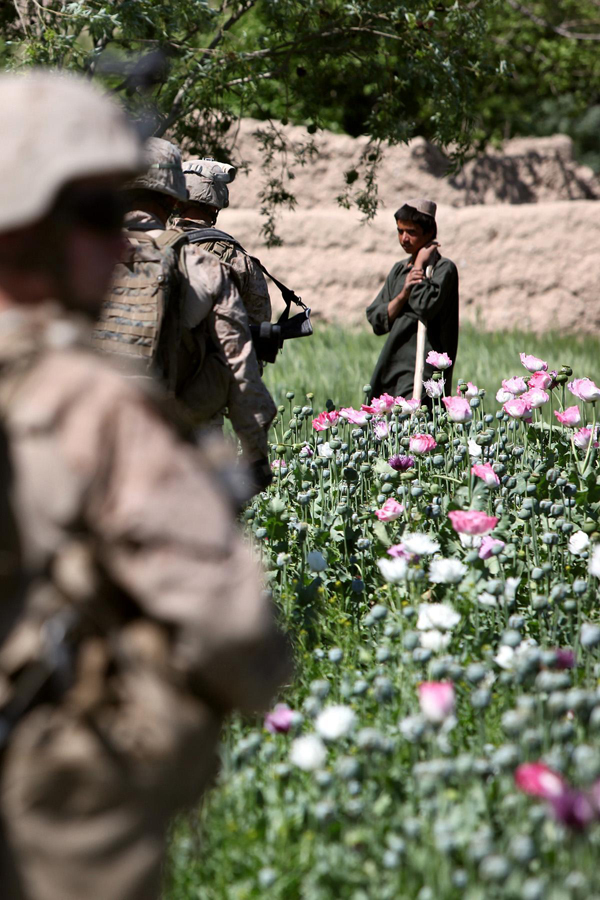 An Afghan boy watches Marines with Bravo Battery, 1st Battalion, 10th Marines, Regimental Combat Team-8, patrol a poppy field near the Kajaki green zone in Helmand province, Afghanistan, April 19. During daily patrols over the last several months Bravo Battery Marines have come to know the local kids as both a sign of familiarity and safety.
An Afghan boy watches Marines with Bravo Battery, 1st Battalion, 10th Marines, Regimental Combat Team-8, patrol a poppy field near the Kajaki green zone in Helmand province, Afghanistan, April 19. During daily patrols over the last several months Bravo Battery Marines have come to know the local kids as both a sign of familiarity and safety.
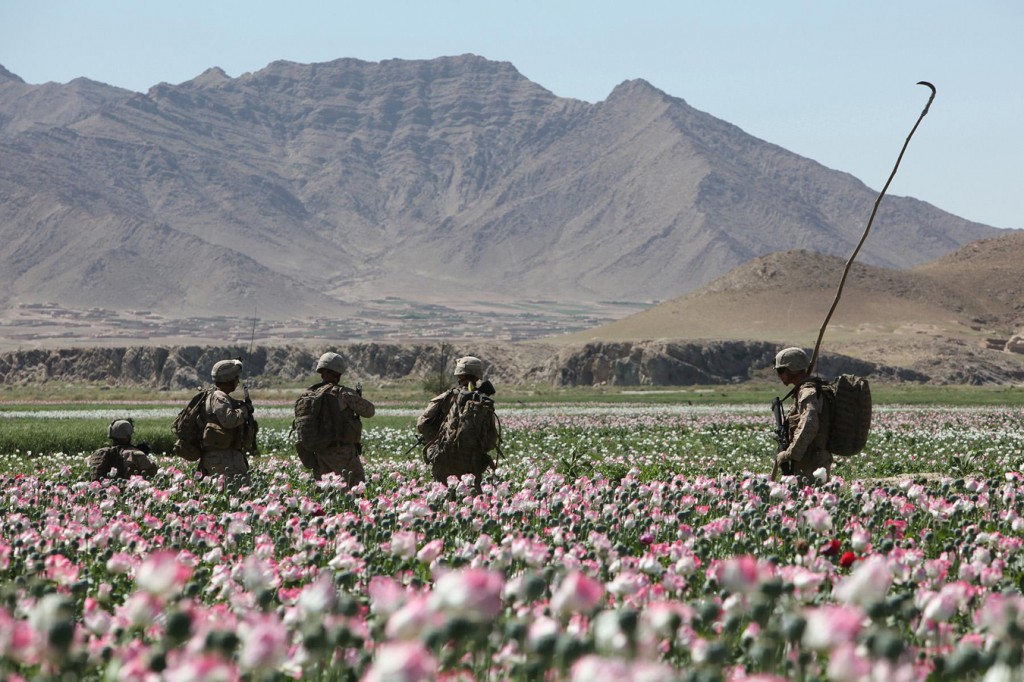 Marines with Bravo Battery, 1st Battalion, 10th Marines, Regimental Combat Team 8, patrol through a poppy field in the Kajaki green zone, Helmand province, Afghanistan, April 19. An artillery unit by doctrine, Bravo Battery has served as a provisional infantry rifle company for the last several months while protecting the area around the Kajaki Dam.
Marines with Bravo Battery, 1st Battalion, 10th Marines, Regimental Combat Team 8, patrol through a poppy field in the Kajaki green zone, Helmand province, Afghanistan, April 19. An artillery unit by doctrine, Bravo Battery has served as a provisional infantry rifle company for the last several months while protecting the area around the Kajaki Dam.
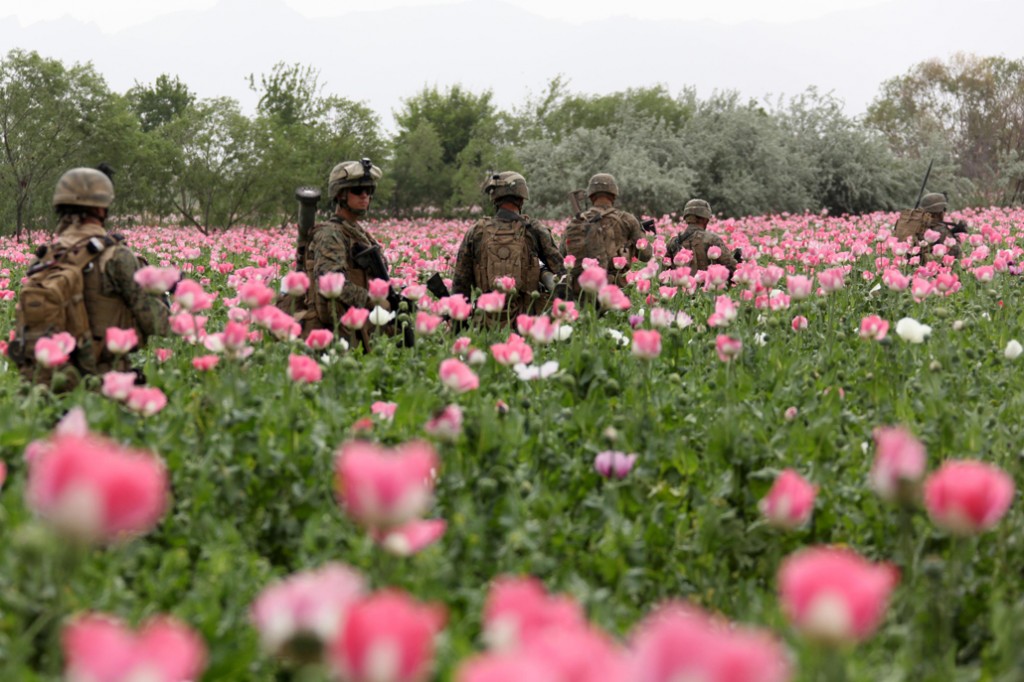 U.S. Marines with 1st Platoon, Company I, Battalion Landing Team 3/8, Regimental Combat Team 8, return to base through a poppy field after a security patrol from their patrol base in Helmand province’s Green Zone, west of the Nahr-e Saraj canal, April 13. Elements of 26th Marine Expeditionary Unit deployed to Afghanistan to provide regional security in Helmand province in support of the International Security Assistance Force.
U.S. Marines with 1st Platoon, Company I, Battalion Landing Team 3/8, Regimental Combat Team 8, return to base through a poppy field after a security patrol from their patrol base in Helmand province’s Green Zone, west of the Nahr-e Saraj canal, April 13. Elements of 26th Marine Expeditionary Unit deployed to Afghanistan to provide regional security in Helmand province in support of the International Security Assistance Force.
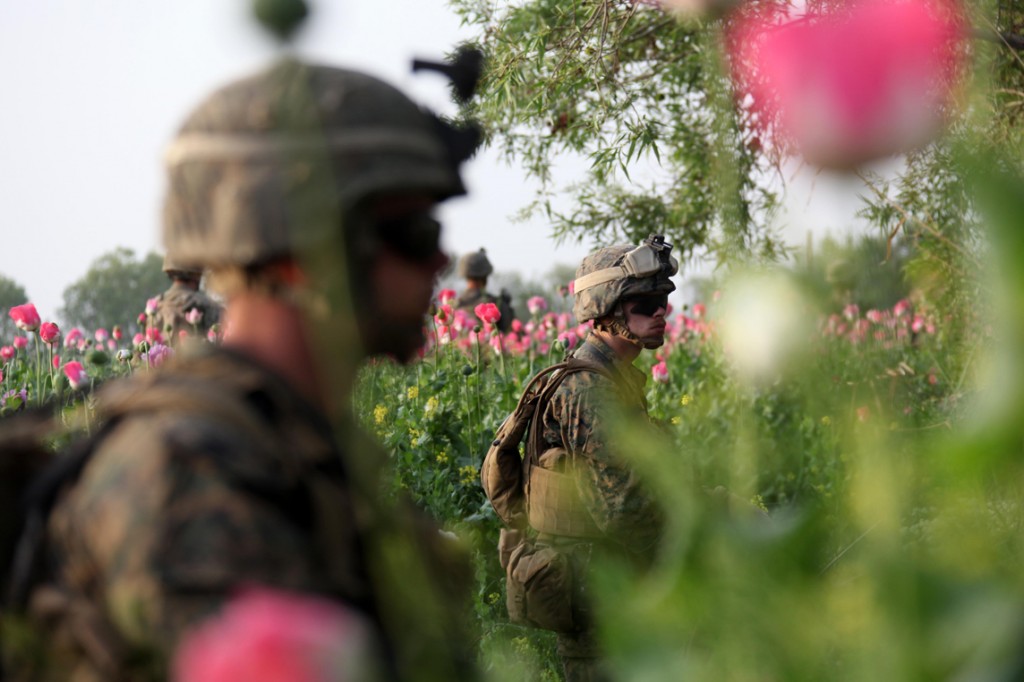 U.S. Marine Corps Lance Cpl. Mark Bower (right), a 60mm mortarman, and U.S. Marines with 1st Platoon, Company I, Battalion Landing Team 3/8, Regimental Combat Team 8, provide security for another element at the edge of a poppy field during a security patrol from their patrol base in Helmand province’s Green Zone, west of the Nahr-e Saraj canal, April 13, 2011. Elements of 26th Marine Expeditionary Unit deployed to Afghanistan to provide regional security in Helmand province in support of the International Security Assistance Force.
U.S. Marine Corps Lance Cpl. Mark Bower (right), a 60mm mortarman, and U.S. Marines with 1st Platoon, Company I, Battalion Landing Team 3/8, Regimental Combat Team 8, provide security for another element at the edge of a poppy field during a security patrol from their patrol base in Helmand province’s Green Zone, west of the Nahr-e Saraj canal, April 13, 2011. Elements of 26th Marine Expeditionary Unit deployed to Afghanistan to provide regional security in Helmand province in support of the International Security Assistance Force.
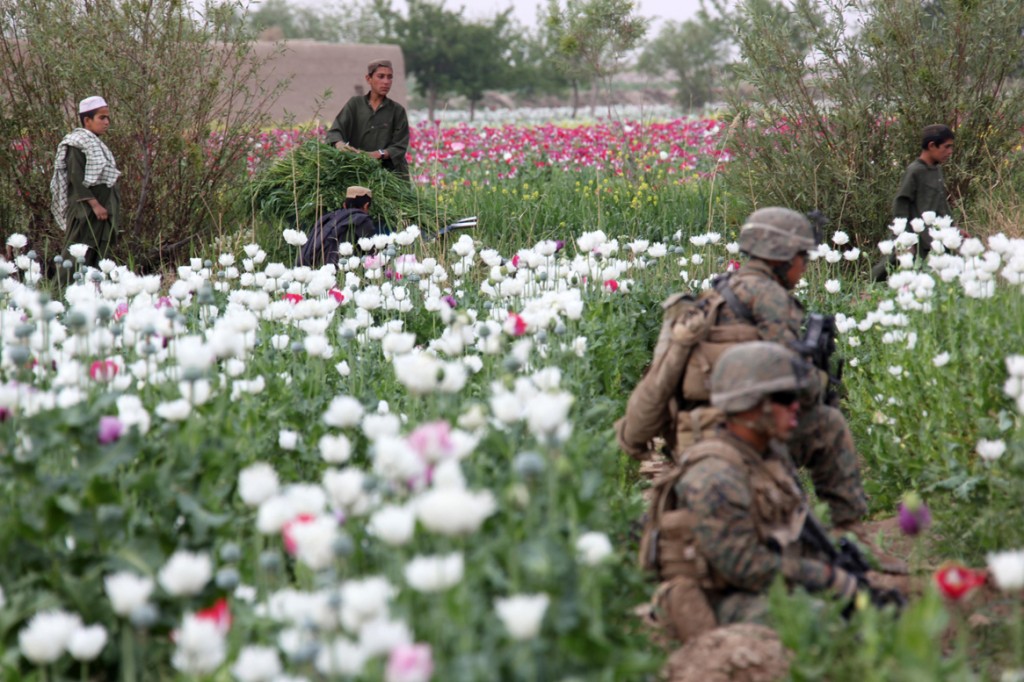 U.S. Marines Lance Cpl. Zachary Mizasawa, top, an M249 squad automatic weapon gunner, and Lance Cpl. Kevin Gonzalezsierra, a rifleman, both with 1st Platoon, Company I, Battalion Landing Team 3/8, Regimental Combat Team 8, hold in place while a group of Afghan boys tend poppy crops during a security patrol from their patrol base in Helmand province’s Green Zone, west of the Nahr-e Saraj canal, April 7, 2011. Elements of 26th Marine Expeditionary Unit deployed to Afghanistan to provide regional security in Helmand province in support of the International Security Assistance Force.
U.S. Marines Lance Cpl. Zachary Mizasawa, top, an M249 squad automatic weapon gunner, and Lance Cpl. Kevin Gonzalezsierra, a rifleman, both with 1st Platoon, Company I, Battalion Landing Team 3/8, Regimental Combat Team 8, hold in place while a group of Afghan boys tend poppy crops during a security patrol from their patrol base in Helmand province’s Green Zone, west of the Nahr-e Saraj canal, April 7, 2011. Elements of 26th Marine Expeditionary Unit deployed to Afghanistan to provide regional security in Helmand province in support of the International Security Assistance Force.
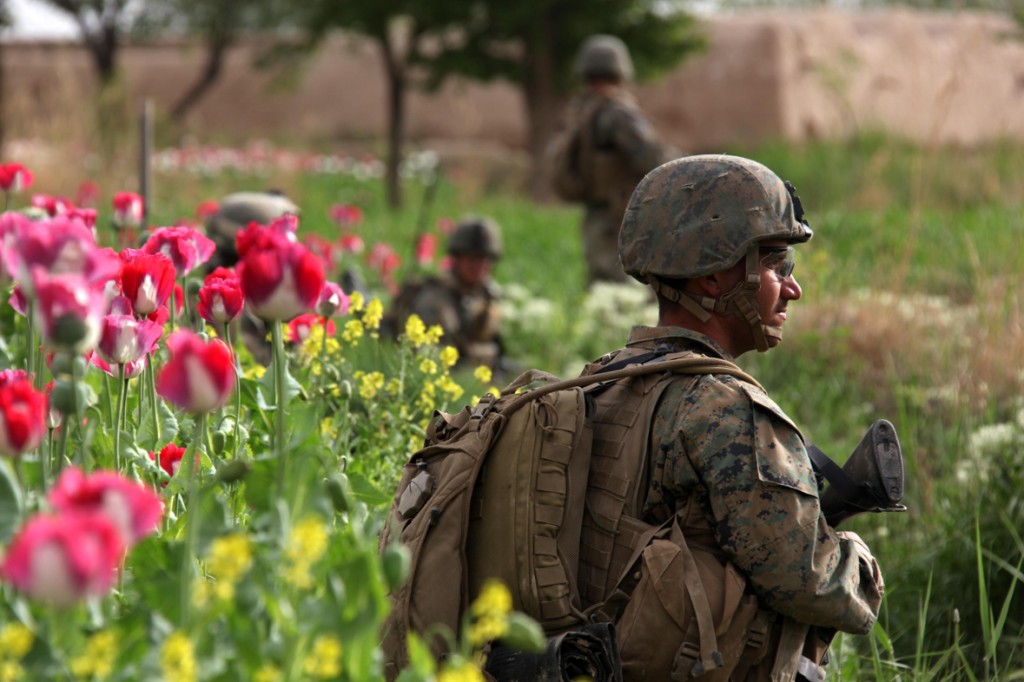 U.S. Navy Seaman Jeremy Threatte, a corpsman , and U.S. Marines with 2nd Platoon, Company I, Battalion Landing Team 3/8, Regimental Combat Team 8, pause at the edge of a poppy field during a security patrol from their patrol base in Helmand province’s Green Zone, west of the Nahr-e Saraj canal, April 5, 2011. Elements of 26th Marine Expeditionary Unit deployed to Afghanistan to provide regional security in Helmand province in support of the International Security Assistance Force.
U.S. Navy Seaman Jeremy Threatte, a corpsman , and U.S. Marines with 2nd Platoon, Company I, Battalion Landing Team 3/8, Regimental Combat Team 8, pause at the edge of a poppy field during a security patrol from their patrol base in Helmand province’s Green Zone, west of the Nahr-e Saraj canal, April 5, 2011. Elements of 26th Marine Expeditionary Unit deployed to Afghanistan to provide regional security in Helmand province in support of the International Security Assistance Force.
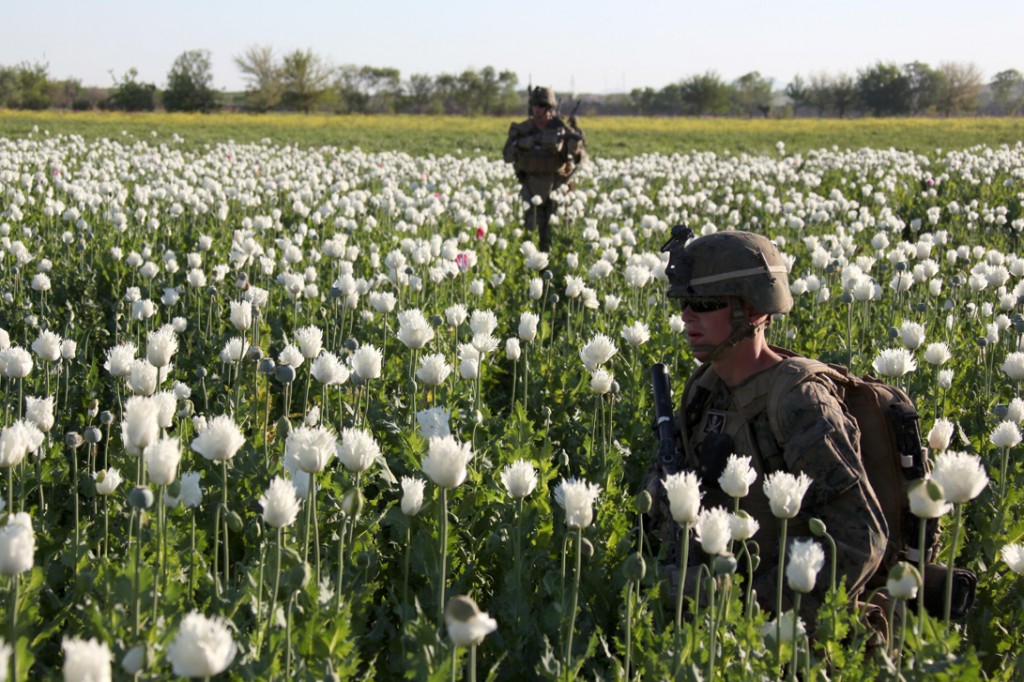 U.S. Navy Hospitalman Chris Coughlin, a corpsman with 1st Platoon, Company I, Battalion Landing Team 3/8, Regimental Combat Team 8, pauses in a poppy field during a security patrol from their patrol base in Helmand province’s Green Zone, west of the Nar-e Saraj canal, April 1. Elements of 26th Marine Expeditionary Unit deployed to Afghanistan to provide regional security in Helmand province in support of the International Security Assistance Force.
U.S. Navy Hospitalman Chris Coughlin, a corpsman with 1st Platoon, Company I, Battalion Landing Team 3/8, Regimental Combat Team 8, pauses in a poppy field during a security patrol from their patrol base in Helmand province’s Green Zone, west of the Nar-e Saraj canal, April 1. Elements of 26th Marine Expeditionary Unit deployed to Afghanistan to provide regional security in Helmand province in support of the International Security Assistance Force.
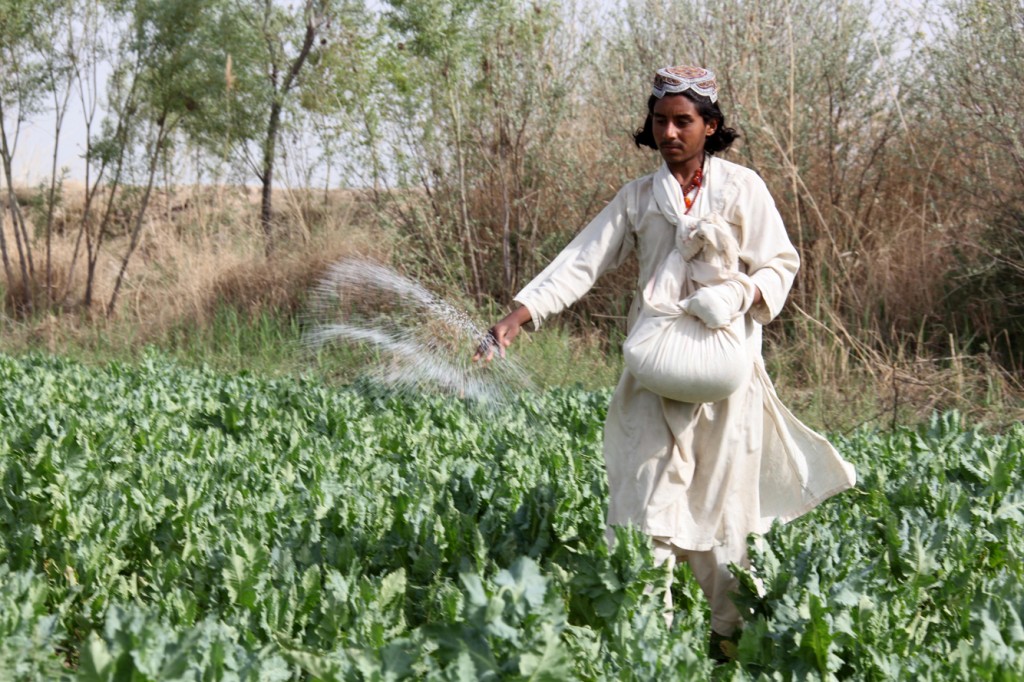 An Afghan farmer fertilizes his poppy field near the patrol base of U.S. Marine Corps Company I, Battalion Landing Team 3/8, Regimental Combat Team 8, in Helmand province’s Green Zone, west of the Nahr-e Saraj canal, March 27. Elements of 26th Marine Expeditionary Unit deployed to Afghanistan to provide regional security in Helmand province in support of the International Security Assistance Force.
An Afghan farmer fertilizes his poppy field near the patrol base of U.S. Marine Corps Company I, Battalion Landing Team 3/8, Regimental Combat Team 8, in Helmand province’s Green Zone, west of the Nahr-e Saraj canal, March 27. Elements of 26th Marine Expeditionary Unit deployed to Afghanistan to provide regional security in Helmand province in support of the International Security Assistance Force.
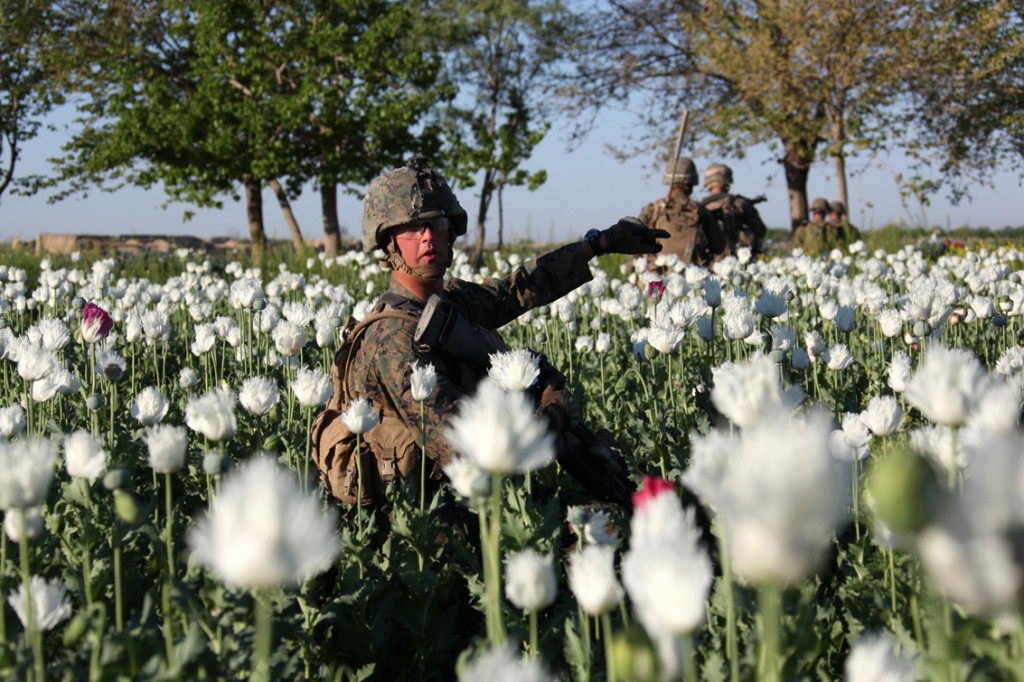 U.S. Marine Corps Lance Cpl. Timothy Brown, a team leader with 1st Platoon, Company I, Battalion Landing Team 3/8, Regimental Combat Team 8, passes word to his patrol members in a poppy field during a security patrol from their patrol base in Helmand province’s Green Zone, west of the Nar-e Saraj canal, April 1. Elements of 26th Marine Expeditionary Unit deployed to Afghanistan to provide regional security in Helmand province in support of the International Security Assistance Force.
U.S. Marine Corps Lance Cpl. Timothy Brown, a team leader with 1st Platoon, Company I, Battalion Landing Team 3/8, Regimental Combat Team 8, passes word to his patrol members in a poppy field during a security patrol from their patrol base in Helmand province’s Green Zone, west of the Nar-e Saraj canal, April 1. Elements of 26th Marine Expeditionary Unit deployed to Afghanistan to provide regional security in Helmand province in support of the International Security Assistance Force.
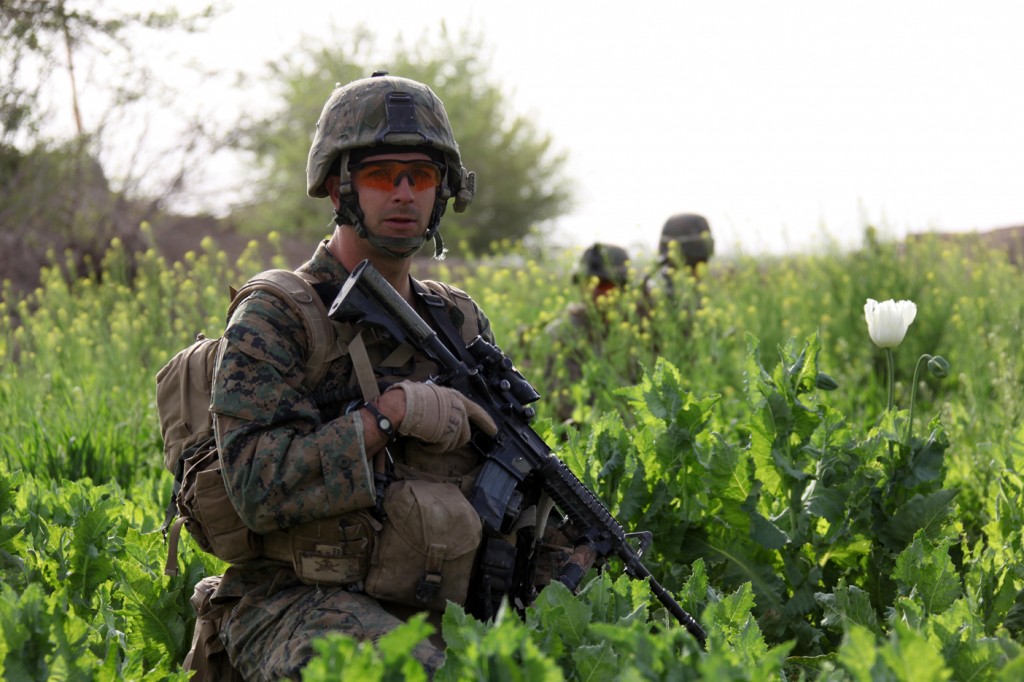 U.S. Navy Petty Officer 3rd Class Tyler Ivy, hospital corpsman, attached to 1st Platoon, Company I, Battalion Landing Team 3/8, Regimental Combat Team 8, pauses during a security patrol through a poppy field from their patrol base in Helmand province’s Green Zone, west of the Nahr-e Saraj canal, March 27. Elements of 26th Marine Expeditionary Unit deployed to Afghanistan to provide regional security in Helmand province in support of the International Security Assistance Force.
U.S. Navy Petty Officer 3rd Class Tyler Ivy, hospital corpsman, attached to 1st Platoon, Company I, Battalion Landing Team 3/8, Regimental Combat Team 8, pauses during a security patrol through a poppy field from their patrol base in Helmand province’s Green Zone, west of the Nahr-e Saraj canal, March 27. Elements of 26th Marine Expeditionary Unit deployed to Afghanistan to provide regional security in Helmand province in support of the International Security Assistance Force.
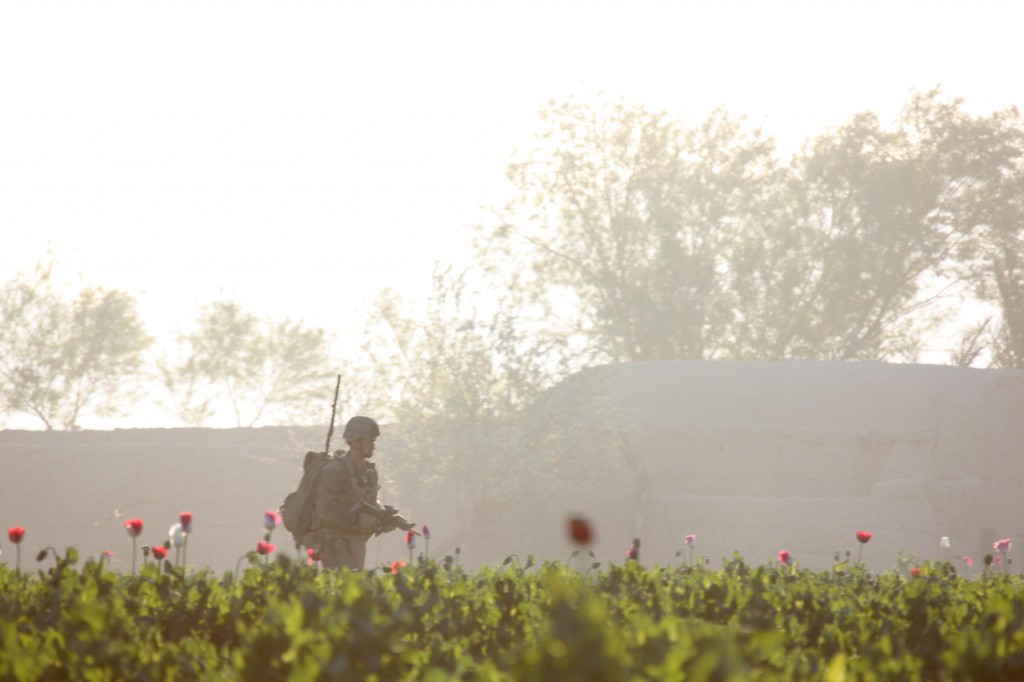 U.S. Marine Corps Lance Cpl. Clay Sherrod, an M249 squad automatic weapon gunner with Sniper Platoon attached to Company I, Battalion Landing Team 3/8, Regimental Combat Team 8, conducts a security patrol through a poppy field in the early morning haze from their patrol base in Helmand province’s Green Zone, west of the Nar-e Saraj canal, April 1. Elements of 26th Marine Expeditionary Unit deployed to Afghanistan to provide regional security in Helmand province in support of the International Security Assistance Force.
U.S. Marine Corps Lance Cpl. Clay Sherrod, an M249 squad automatic weapon gunner with Sniper Platoon attached to Company I, Battalion Landing Team 3/8, Regimental Combat Team 8, conducts a security patrol through a poppy field in the early morning haze from their patrol base in Helmand province’s Green Zone, west of the Nar-e Saraj canal, April 1. Elements of 26th Marine Expeditionary Unit deployed to Afghanistan to provide regional security in Helmand province in support of the International Security Assistance Force.
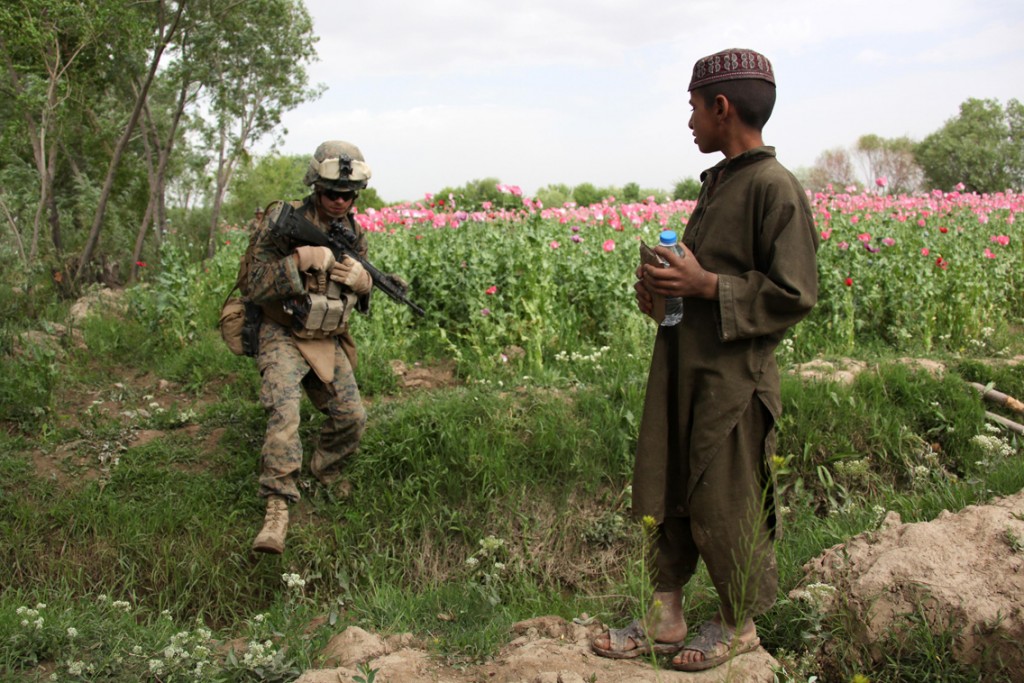 An Aghan boy working in a poppy field watches as U.S. Marine Corps Lance Cpl. Mark Bower, a 60mm mortarman with 1st Platoon, Company I, Battalion Landing Team 3/8, Regimental Combat Team 8, crosses a ditch during a security patrol from their patrol base in Helmand province’s Green Zone, west of the Nahr-e Saraj canal, April 13. Elements of 26th Marine Expeditionary Unit deployed to Afghanistan to provide regional security in Helmand province in support of the International Security Assistance Force.
An Aghan boy working in a poppy field watches as U.S. Marine Corps Lance Cpl. Mark Bower, a 60mm mortarman with 1st Platoon, Company I, Battalion Landing Team 3/8, Regimental Combat Team 8, crosses a ditch during a security patrol from their patrol base in Helmand province’s Green Zone, west of the Nahr-e Saraj canal, April 13. Elements of 26th Marine Expeditionary Unit deployed to Afghanistan to provide regional security in Helmand province in support of the International Security Assistance Force.
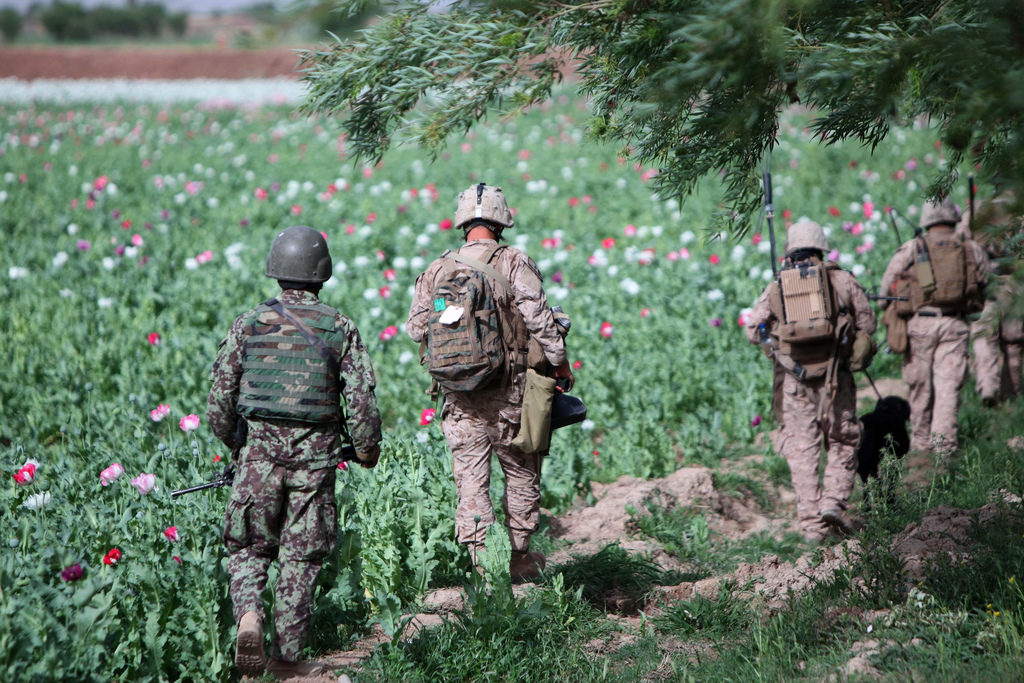 An Afghan National Army soldier accompanies a squad of Marines with Company B, 1st Tank Battalion, during a mission April 9. Tankers had to learn a whole new skill set in order to be successful during their seven-month tour in Afghanistan.
An Afghan National Army soldier accompanies a squad of Marines with Company B, 1st Tank Battalion, during a mission April 9. Tankers had to learn a whole new skill set in order to be successful during their seven-month tour in Afghanistan.
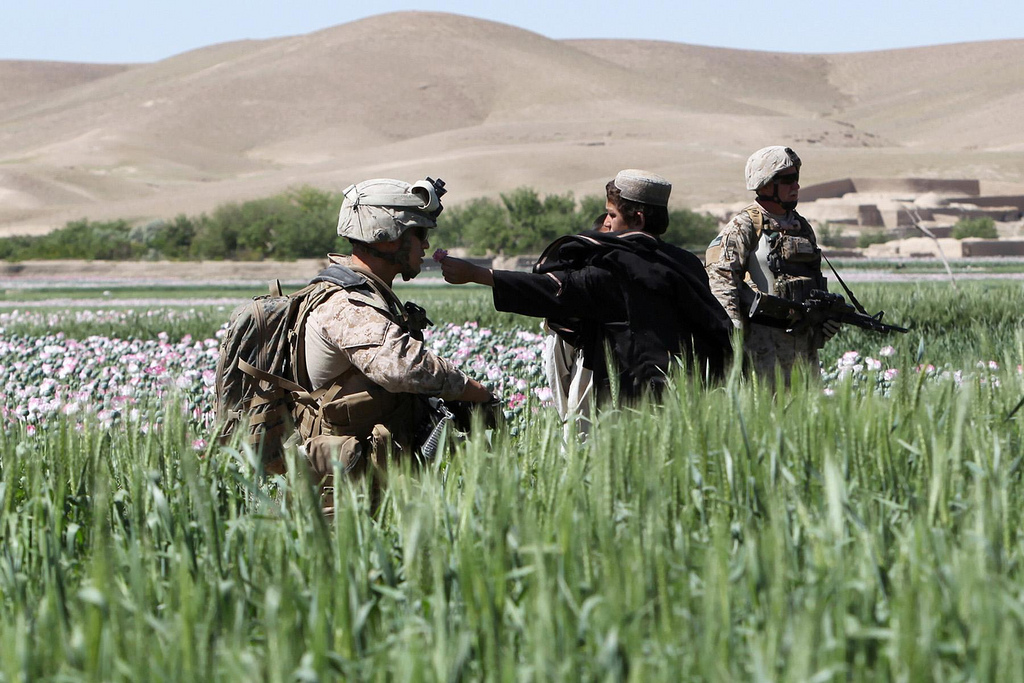 An Afghan child helps Cpl. Anthony J. Chavez, an Albuquerque, N.M., native, and a provisional rifleman with Bravo Battery, 1st Battalion, 10th Marines, Regimental Combat Team-8, stop to smell the flowers during a patrol halt in the Kajaki green zone, Helmand province, Afghanistan, April 19.
An Afghan child helps Cpl. Anthony J. Chavez, an Albuquerque, N.M., native, and a provisional rifleman with Bravo Battery, 1st Battalion, 10th Marines, Regimental Combat Team-8, stop to smell the flowers during a patrol halt in the Kajaki green zone, Helmand province, Afghanistan, April 19.
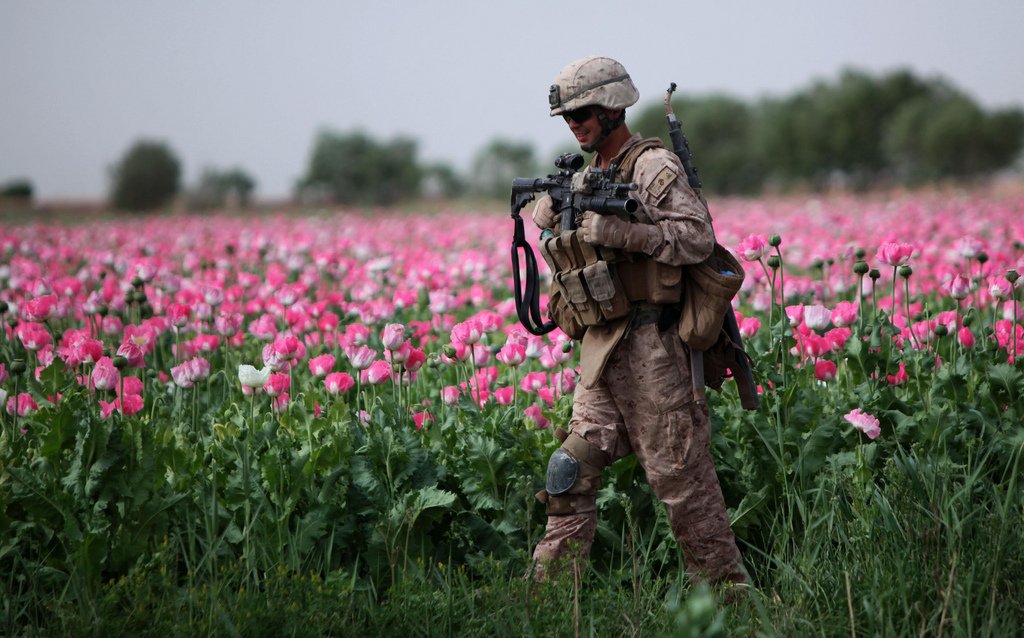
MARJAH, Helmand province, Islamic Republic of Afghanistan – Corporal Mark Hickok, a 23-year-old combat engineer from North Olmstead, Ohio, patrols through a field during a clearing mission April 9. Marines with Company B, 1st Tank Battalion, learned basic route clearance techniques from engineers like Hickok, who are deployed with 1st Combat Engineer Battalion.
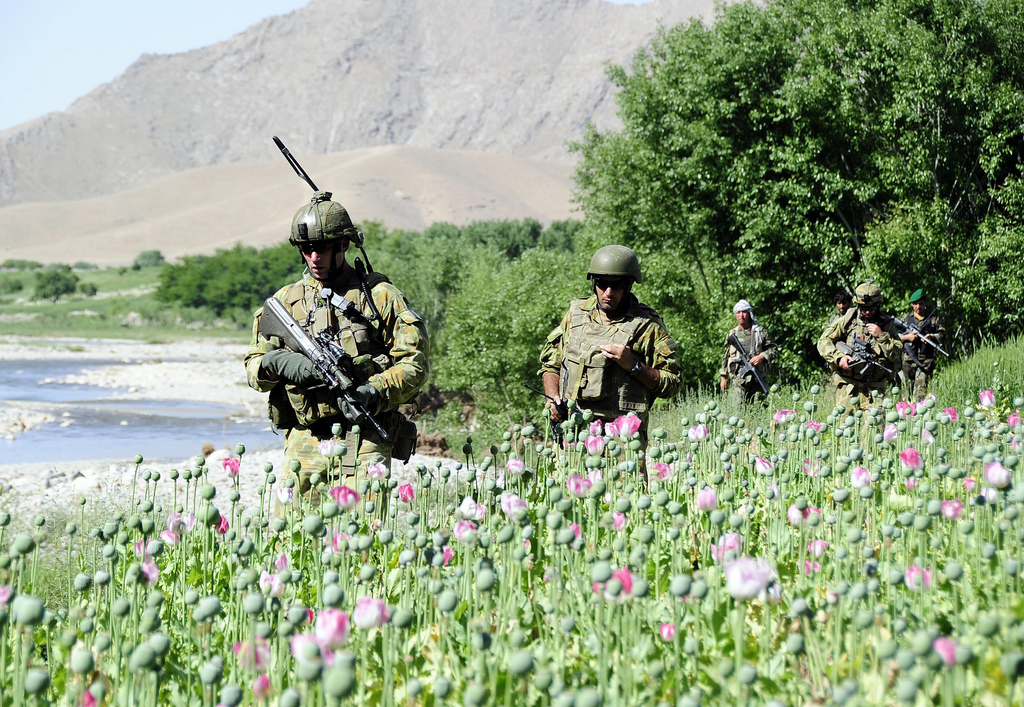 Captain Julian Hohnen, Officer Commanding a combined Australian and Afghan Army patrol base in the Baluchi Valley Region mentors Afghan National Army Officer, Lieutenant Farhad Habib. Mid Caption: All across the MTF1 area of operations partnered mentoring is being conducted on mounted and dismounted combined patrols with ever increasing security presence being experienced by local communities from the Southern Baluchi Valley to the Northern Chora reaches as well as east through the Mirabad. Ongoing combined ANA and MTF1 security operations involving infantry, combat engineer and reconnaissance capabilities in Oruzgan have achieved multiple layers of effects including an increased rate of IED “find and render safe” percentages, increased cache finds, and enhanced trust fostered within local communities. Deep Caption: Operation SLIPPER is Australia’s military contribution to the international campaign against terrorism, piracy and improving maritime security. Under this operation our forces contribute to the efforts of the North Atlantic Treaty Organisation (NATO) – led International Security Assistance Force (ISAF) in Afghanistan. ISAF seeks to bring security, stability and prosperity to Afghanistan and aims to prevent Afghanistan again becoming a safe haven for international terrorists. Operation SLIPPER also supports the United States led International Coalition Against Terrorism (ICAT) in the broader Middle East.
Captain Julian Hohnen, Officer Commanding a combined Australian and Afghan Army patrol base in the Baluchi Valley Region mentors Afghan National Army Officer, Lieutenant Farhad Habib. Mid Caption: All across the MTF1 area of operations partnered mentoring is being conducted on mounted and dismounted combined patrols with ever increasing security presence being experienced by local communities from the Southern Baluchi Valley to the Northern Chora reaches as well as east through the Mirabad. Ongoing combined ANA and MTF1 security operations involving infantry, combat engineer and reconnaissance capabilities in Oruzgan have achieved multiple layers of effects including an increased rate of IED “find and render safe” percentages, increased cache finds, and enhanced trust fostered within local communities. Deep Caption: Operation SLIPPER is Australia’s military contribution to the international campaign against terrorism, piracy and improving maritime security. Under this operation our forces contribute to the efforts of the North Atlantic Treaty Organisation (NATO) – led International Security Assistance Force (ISAF) in Afghanistan. ISAF seeks to bring security, stability and prosperity to Afghanistan and aims to prevent Afghanistan again becoming a safe haven for international terrorists. Operation SLIPPER also supports the United States led International Coalition Against Terrorism (ICAT) in the broader Middle East.
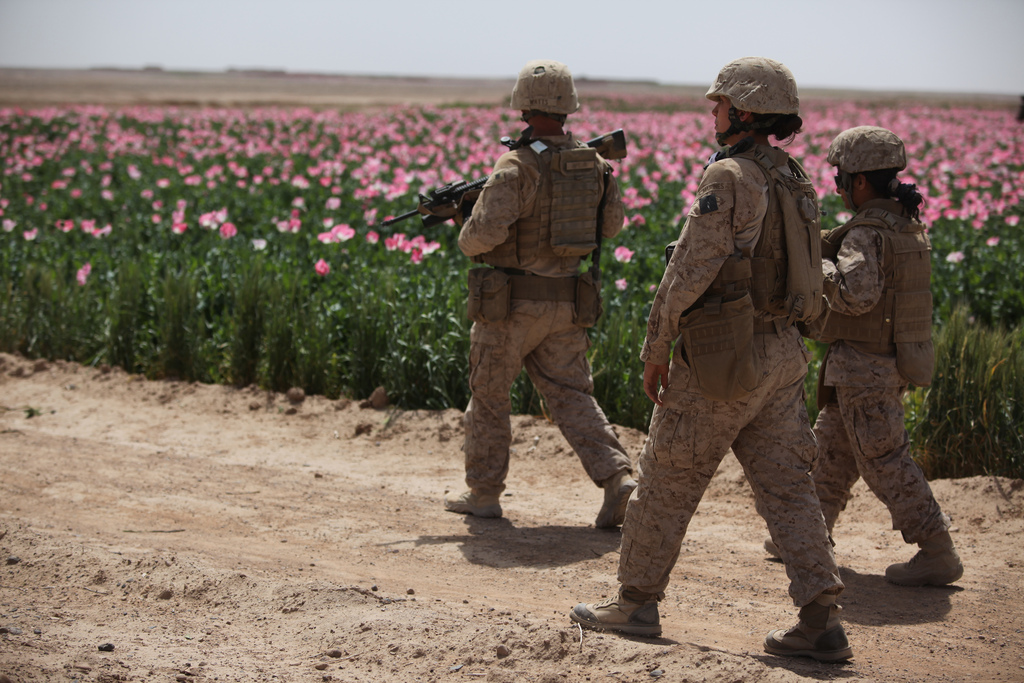 U.S. Marines assigned to the female engagement team (FET) of I Marine Expeditionary Force (Forward) conduct a patrol alongside a poppy field while visiting Afghan settlements in Boldak, Afghanistan, April 5, 2010. The FET, which is deployed in support of the International Security Assistance Force, is in the area to engage with local women in an effort to gain cultural awareness and ascertain family needs. (DoD photo by Cpl. Lindsay L. Sayres, U.S. Marine Corps/Released)
U.S. Marines assigned to the female engagement team (FET) of I Marine Expeditionary Force (Forward) conduct a patrol alongside a poppy field while visiting Afghan settlements in Boldak, Afghanistan, April 5, 2010. The FET, which is deployed in support of the International Security Assistance Force, is in the area to engage with local women in an effort to gain cultural awareness and ascertain family needs. (DoD photo by Cpl. Lindsay L. Sayres, U.S. Marine Corps/Released)
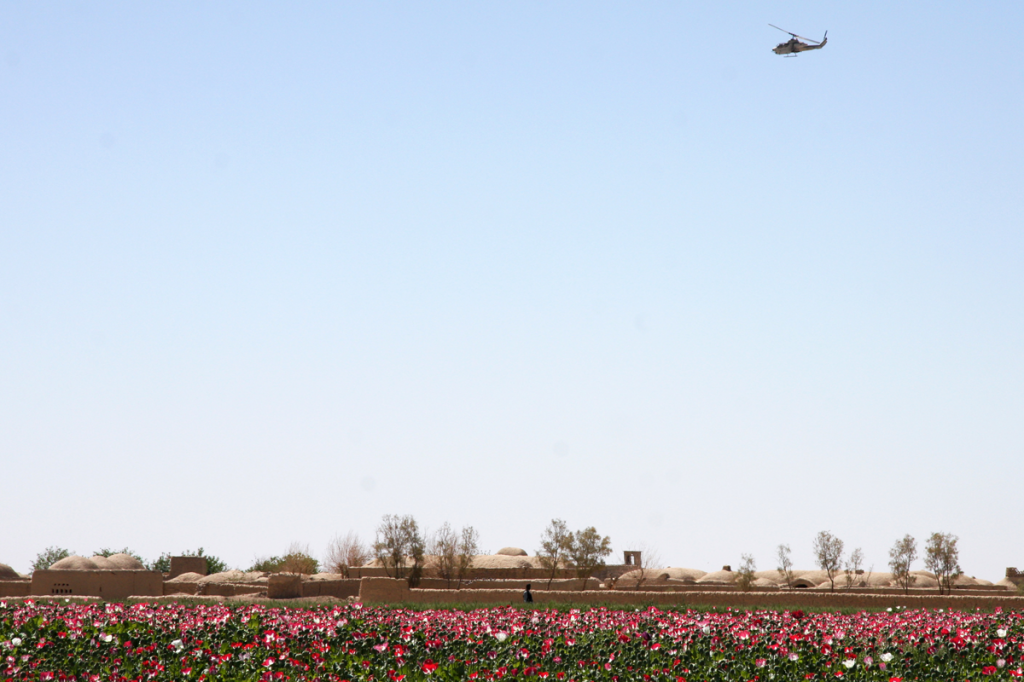 An Afghan poppy farmer watches an AH-1W Cobra helicopter fly over his field in Farah province, Afghanistan, March 8, 2009. The Cobras are providing overwatch protection for Afghan National Police officers and U.S. Marines with India Company, 3rd Battalion, 8th Marine Regiment as they conduct a cordon and search in a small village. The Cobras are part of the Air Command Element for the Special Purpose Marine Air Ground Task Force-Afghanistan which is rooting out Taliban and insurgent fighters and providing security for the Afghan people. (U.S. Marine Corps photo by Chief Warrant Offficer Philippe Chasse/Released)
An Afghan poppy farmer watches an AH-1W Cobra helicopter fly over his field in Farah province, Afghanistan, March 8, 2009. The Cobras are providing overwatch protection for Afghan National Police officers and U.S. Marines with India Company, 3rd Battalion, 8th Marine Regiment as they conduct a cordon and search in a small village. The Cobras are part of the Air Command Element for the Special Purpose Marine Air Ground Task Force-Afghanistan which is rooting out Taliban and insurgent fighters and providing security for the Afghan people. (U.S. Marine Corps photo by Chief Warrant Offficer Philippe Chasse/Released)
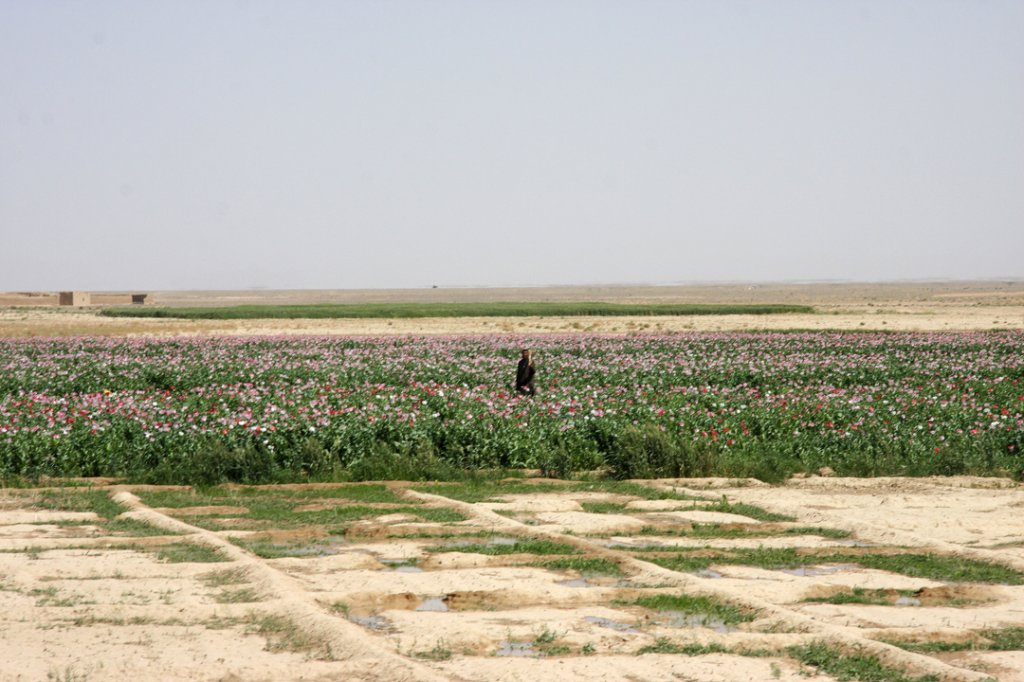 An Afghani farmer stands in the middle of his poppy field in Delaram, Afghanistan, watching U.S. Marines from 3rd Battalion, 8th Marine Regiment Combat Train conduct a resupply convoy down Highway 515, from Delaram to Bakwa, Afghanistan, March 25, 2009. The Iraqi government is working to eradicate poppy cultivation throughout the country to improve the health, security and development of Afghanistan. Alternative livelihoods for farmers are being planned and implemented. (U.S. Marine Corps photo by Chief Warrant Officer Philippe Chasse/Released)
An Afghani farmer stands in the middle of his poppy field in Delaram, Afghanistan, watching U.S. Marines from 3rd Battalion, 8th Marine Regiment Combat Train conduct a resupply convoy down Highway 515, from Delaram to Bakwa, Afghanistan, March 25, 2009. The Iraqi government is working to eradicate poppy cultivation throughout the country to improve the health, security and development of Afghanistan. Alternative livelihoods for farmers are being planned and implemented. (U.S. Marine Corps photo by Chief Warrant Officer Philippe Chasse/Released)
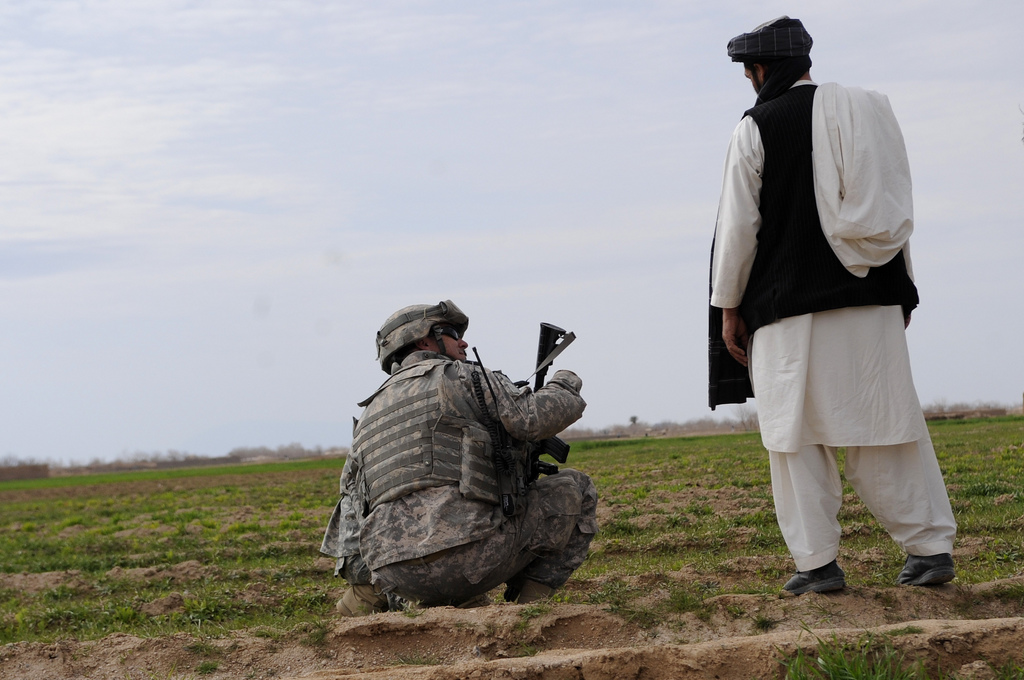 DIZAK, Afghanistan – ARSIC-W’s Commander’s Emergency Response Program Manager U.S. Navy Lieutenant David Williams from San Diego, Calif., checks out a villager’s poppy crop after being informed the profit for poppy was 40% greater than the profit for growing wheat in the area. Williams visited Dizak to gather information on their needs the same day the Afghan National Police and ARSIC-W Civil Affairs Team delivered humanitarian aid to the village. He plans to use CERP funds to assist the villagers in the future. ISAF Photo by US Navy Mass Communications Specialist Petty Officer 1st Class Monica R. Nelson
DIZAK, Afghanistan – ARSIC-W’s Commander’s Emergency Response Program Manager U.S. Navy Lieutenant David Williams from San Diego, Calif., checks out a villager’s poppy crop after being informed the profit for poppy was 40% greater than the profit for growing wheat in the area. Williams visited Dizak to gather information on their needs the same day the Afghan National Police and ARSIC-W Civil Affairs Team delivered humanitarian aid to the village. He plans to use CERP funds to assist the villagers in the future. ISAF Photo by US Navy Mass Communications Specialist Petty Officer 1st Class Monica R. Nelson
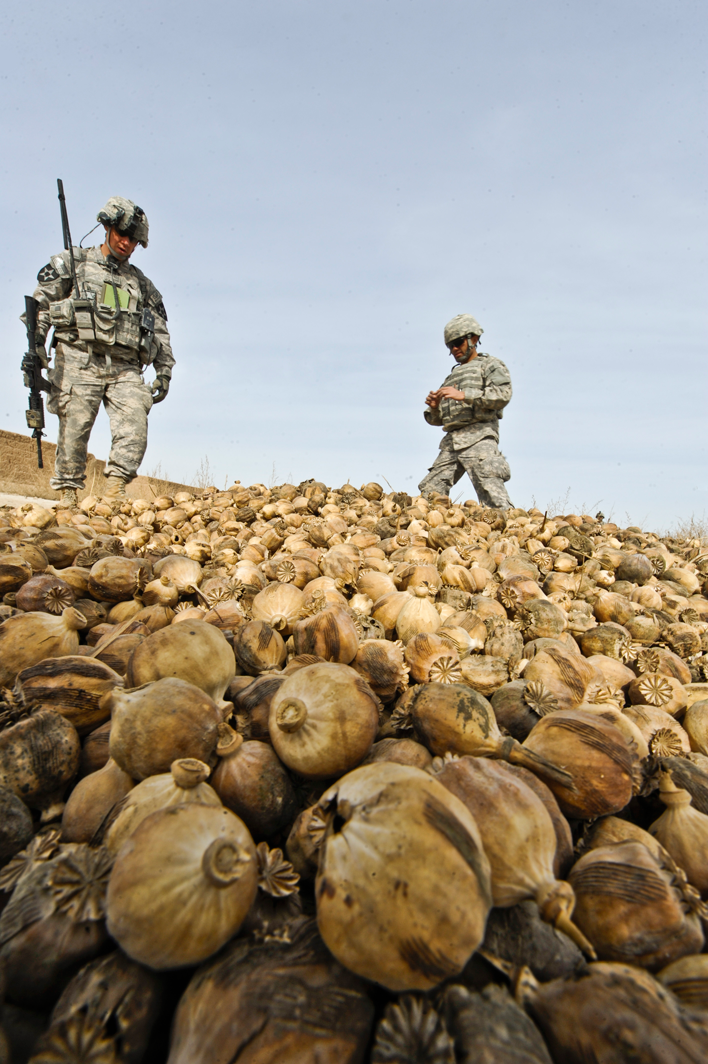 U.S. Army Lt. Col. Burton Shields, commander of 4th Battalion, 23rd Infantry Regiment, and his interpreter Ali Mohamed discover a pile of dried poppy plants in Badula Qulp, Helmand province, Afghanistan, Feb. 12, 2010. The Soldiers are participating in Operation Helmand Spider. (U.S. Air Force photo by Tech. Sgt. Efren Lopez/Released)
U.S. Army Lt. Col. Burton Shields, commander of 4th Battalion, 23rd Infantry Regiment, and his interpreter Ali Mohamed discover a pile of dried poppy plants in Badula Qulp, Helmand province, Afghanistan, Feb. 12, 2010. The Soldiers are participating in Operation Helmand Spider. (U.S. Air Force photo by Tech. Sgt. Efren Lopez/Released)
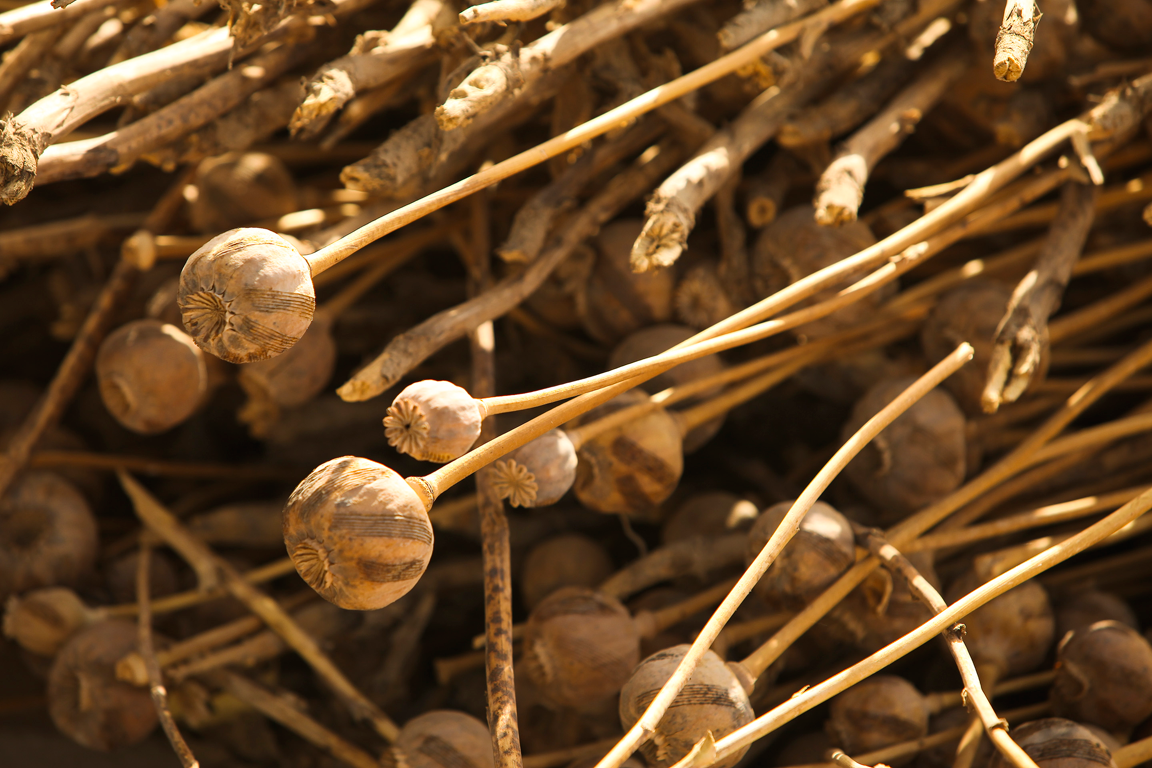 Dried Poppy plants are photographed July 15, 2009, as Afghan National Army soldiers and U.S. Marines with 1st Battalion, 5th Marine Regiment conduct a civil affairs patrol in the Nawa District, Helmand Province, Afghanistan. Marines with 1st Battalion, 5th Marine Regiment, Regimental Combat Team 3, 2nd Marine Expeditionary Brigade – Afghanistan, are deployed in support of NATO’s International Security Assistance Force. (U.S. Marine Corps photo by Lance Cpl. James Purschwitz/Released)
Dried Poppy plants are photographed July 15, 2009, as Afghan National Army soldiers and U.S. Marines with 1st Battalion, 5th Marine Regiment conduct a civil affairs patrol in the Nawa District, Helmand Province, Afghanistan. Marines with 1st Battalion, 5th Marine Regiment, Regimental Combat Team 3, 2nd Marine Expeditionary Brigade – Afghanistan, are deployed in support of NATO’s International Security Assistance Force. (U.S. Marine Corps photo by Lance Cpl. James Purschwitz/Released)
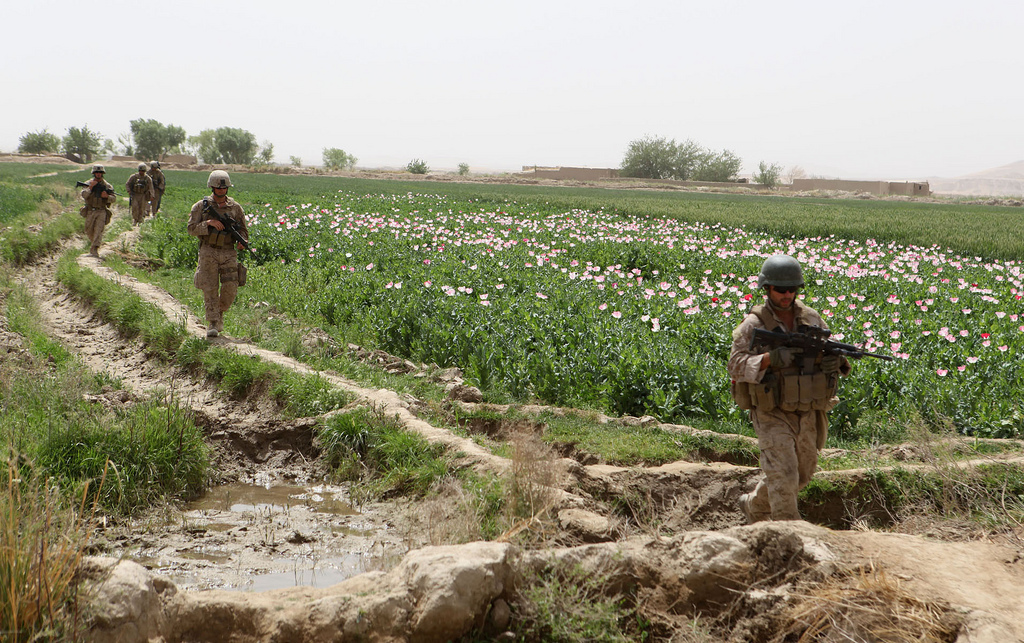 A Police Mentoring Team and members of the Afghan national police patrol through a poppy field near Combat Outpost Castle, Helmand province, Afghanistan, March 29. PMT routinely patrol the area searching for improvised explosive devises, looking for Taliban influence, and interacting with the local populace while mentoring the ANP.
A Police Mentoring Team and members of the Afghan national police patrol through a poppy field near Combat Outpost Castle, Helmand province, Afghanistan, March 29. PMT routinely patrol the area searching for improvised explosive devises, looking for Taliban influence, and interacting with the local populace while mentoring the ANP.
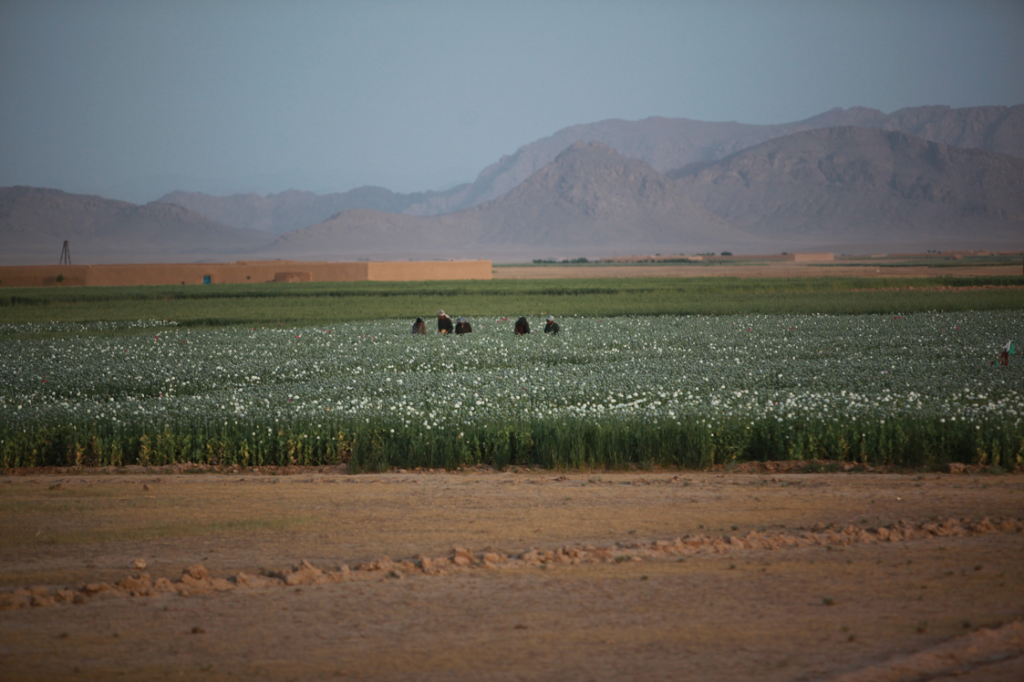 Afghan farmers grow poppies outside the Salaam Bazaar in Now Zad, Afghanistan, April 14, 2010. (U.S. Marine Corps photo by Lance Cpl. Matthew P. Troyer/Released)
Afghan farmers grow poppies outside the Salaam Bazaar in Now Zad, Afghanistan, April 14, 2010. (U.S. Marine Corps photo by Lance Cpl. Matthew P. Troyer/Released)
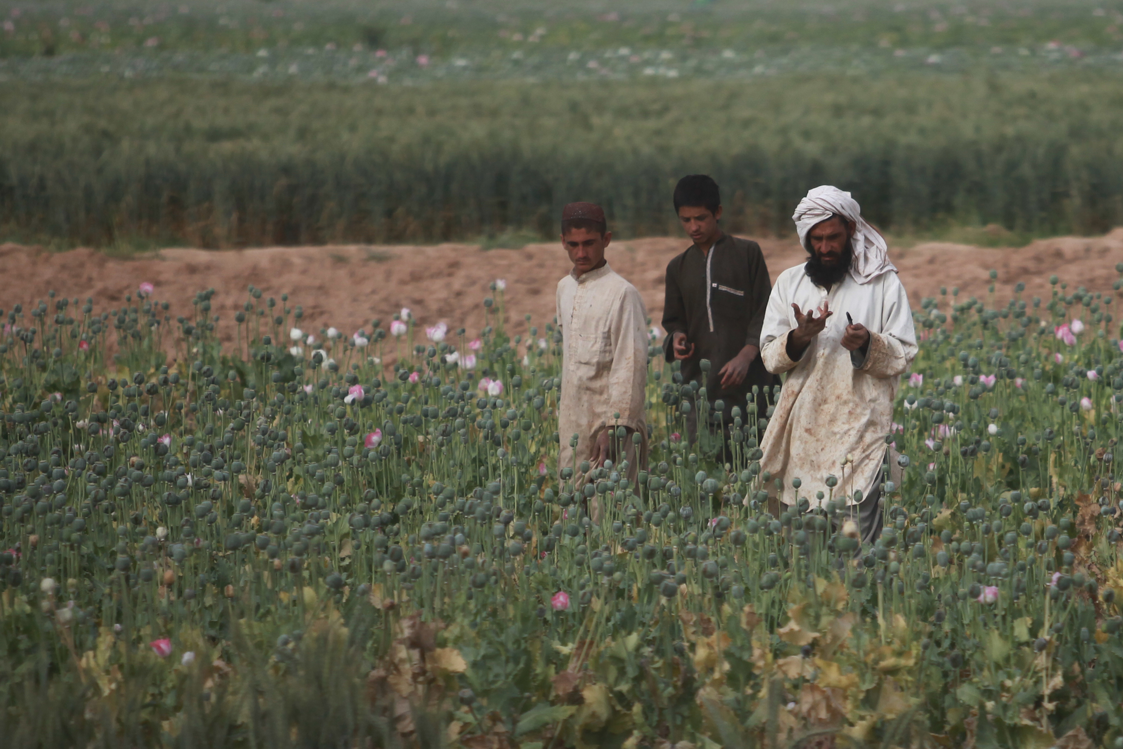 Afghan farmers walk the fields and check their poppy plants as poppy season nears in Now Zad, Afghanistan, April 14, 2010. (U.S. Marine Corps photo by Lance Cpl. Matthew P. Troyer/Released)
Afghan farmers walk the fields and check their poppy plants as poppy season nears in Now Zad, Afghanistan, April 14, 2010. (U.S. Marine Corps photo by Lance Cpl. Matthew P. Troyer/Released)
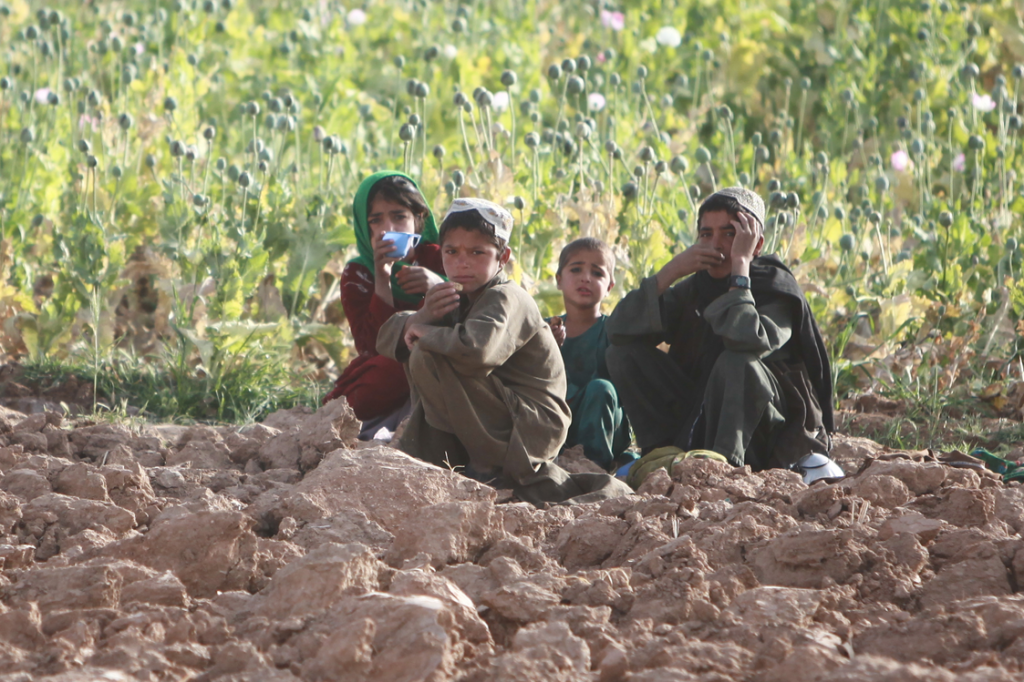 Afghan children sit outside a poppy field in Now Zad, Afghanistan, April 14, 2010. The children played together while older family members worked the poppy fields. (U.S. Marine Corps Photo by Lance Cpl. Matthew P. Troyer/Released)
Afghan children sit outside a poppy field in Now Zad, Afghanistan, April 14, 2010. The children played together while older family members worked the poppy fields. (U.S. Marine Corps Photo by Lance Cpl. Matthew P. Troyer/Released)
http://www.washingtonsblog.com/2012/10/14066.html
-
10-21-2014, 11:55 AM #4
US watchdog: Afghanistan poppy production at record levels despite counternarcotics efforts

U.S. Marines with 1st Battalion, 2nd Marine Regiment observe the surrounding area near a poppy field during a security patrol in Shorab, Helmand province, Afghanistan on September 20, 2014. JOHN A. MARTINEZ JR./U.S. MARINE CORPS
By Jad SleimanStars and Stripes
Published: October 20, 2014

U.S. Marines SSgt. Scott Weakly, 1st Battalion, 2nd Marine Regiment, patrols next to a poppy field during a security patrol in Shorab, Helmand province, Afghanistan on September 20, 2014.
JOHN A. MARTINEZ JR./U.S. MARINE CORPS
KABUL, Afghanistan — Afghanistan’s opium economy is booming despite $7.6 billion in U.S. counternarcotics efforts since 2002, federal auditors said in a report released Tuesday.
The most recent findings by the Special Inspector General for Afghanistan Reconstruction come just a few months ahead of the withdrawal of coalition combat troops, when the vast majority of U.S. and NATO forces will leave the country.
SIGAR cited a United Nations tally of net land area used for poppy cultivation in 2013: more than 500,000 acres, a 36 percent jump from the previous year and a historic record. The lion’s share of that cultivation, the U.N. says, comes from Helmand and Kandahar provinces, two regions that were the focus of the 33,000-strong American troop surge four years ago.
“That is equivalent to more than 800 square miles — more than twice the size of all the boroughs of New York City, or 12 times the size of the District of Columbia — planted solid with opium poppies,” SIGAR wrote in a previous report in January.
Afghanistan remains the world’s top producer of opium, supplying more than three-quarters of the world as well as a growing domestic addict population, the U.N. report said. Along with illegal mining and extortion, the illicit drug trade is a major source of funding for the Taliban. International officials have said that the rebels are using the vast profits generated by the opium trade to buy ammunition and weapons and to fuel the insurgency.
The SIGAR report said that poppy production had quadrupled in eastern Nangarhar province, deemed poppy-free in 2008 and previously considered a model for eradication efforts.
In its report, SIGAR included responses to its findings from the U.S. Embassy in Kabul, which said efforts to build up the Afghan government’s counternarcotics capabilities were “still in progress,” and from the Defense Department, which blamed the failure of poppy eradication on the “lack of Afghan government support for the effort.”
Experts say the Taliban are not the only ones cashing in on opium.
William Byrd, a senior expert on Afghanistan with the United States Institute for Peace and former head of the World Bank office in Kabul, suggested that elements of the Afghan government may be profiting from the crop just as much as the armed groups that oppose it.
Poppy profits fueling the Taliban insurgency aren’t the main danger, Byrd said. Instead, the principal threat lies in the corrupting capacity such huge sums of money have on a poor nation’s leadership, he said.
“It’s not a simple equation, as there’s just not any black-and-white line.”
Paradoxically, the Taliban had orchestrated one of the world’s most successful anti-drug campaigns before their ouster by a U.S.-led coalition in the wake of the Sept. 11, 2001, attacks. The militants, in collaboration with the U.N., banned the growing of poppy, which resulted in a 91 percent drop in cultivation in the final year of their rule.
But since then, opium production has increased virtually every year despite continuous efforts by the Afghan government, international agencies and coalition forces to persuade farmers to switch to other crops.
http://www.stripes.com/news/middle-east/us-watchdog-afghanistan-poppy-production-at-record-levels-despite-counternarcotics-efforts-1.309215
-
10-21-2014, 11:58 AM #5
Something really doesn't add up. JMO
U.S. Marines Guard Afghanistan Poppy Fields
Uploaded on Jul 31, 2010
http://www.youtube.com/user/MOXNEWSd0...
U.S. Marines, sponsored by the U.S. taxpayer, stand vigilant watch over poppy fields in Afghanistan ensuring that the world is supplied with plenty of smack. Just don't get caught with any of the poppy derivatives that your tax dollars paid for or you will get a visit from your friendly neighborhood S.W.A.T.and a required stay in a gray bar hotel.
Doesn't this just make your chest swell up with patriotic pride? Good job Marines! Semper Fi to the N.W.O.!
From http://en.wikipedia.org/wiki/Taliban
In 2000 the Taliban banned opium production, a first in Afghan history.
The Taliban's top drug official in Nangarhar, Mullah Amir Mohammed Haqqani, said the ban would remain regardless of whether the Taliban received aid or international recognition. "It is our decree that there will be no poppy cultivation. It is banned forever in this country," he said. "Whether we get assistance or not, poppy growing will never be allowed again in our country."
However, with the 2001 expulsion of the Taliban, opium cultivation returned, and by 2005 Afghanistan provided 87% of the world supply, rising to 90% in 2006.
http://www.youtube.com/watch?v=HNqIrDKnNE8
Similar Threads
-
The Real Lords of Afghan Poppy Fields & Heroin Distribution Hubs
By AirborneSapper7 in forum Other Topics News and IssuesReplies: 16Last Post: 12-17-2012, 03:32 AM -
Rise in Afghan poppy farming fuelled by high opium prices
By AirborneSapper7 in forum Other Topics News and IssuesReplies: 12Last Post: 11-23-2012, 05:49 AM -
Afghanistan Sees a 61% Increase in Poppy Cultivation
By AirborneSapper7 in forum Other Topics News and IssuesReplies: 4Last Post: 10-17-2011, 04:44 AM -
NATO Rejects Russia's Demand to Destroy Afghan Poppy Fields
By AirborneSapper7 in forum Other Topics News and IssuesReplies: 4Last Post: 03-28-2010, 11:22 PM -
Afghan Aid Money Spent on High Salaries
By AirborneSapper7 in forum Other Topics News and IssuesReplies: 0Last Post: 03-25-2008, 08:52 PM


 LinkBack URL
LinkBack URL About LinkBacks
About LinkBacks




 Reply With Quote
Reply With Quote


San Diego to Receive Additional $39 Million for Illegal...
04-16-2024, 06:43 AM in illegal immigration News Stories & Reports